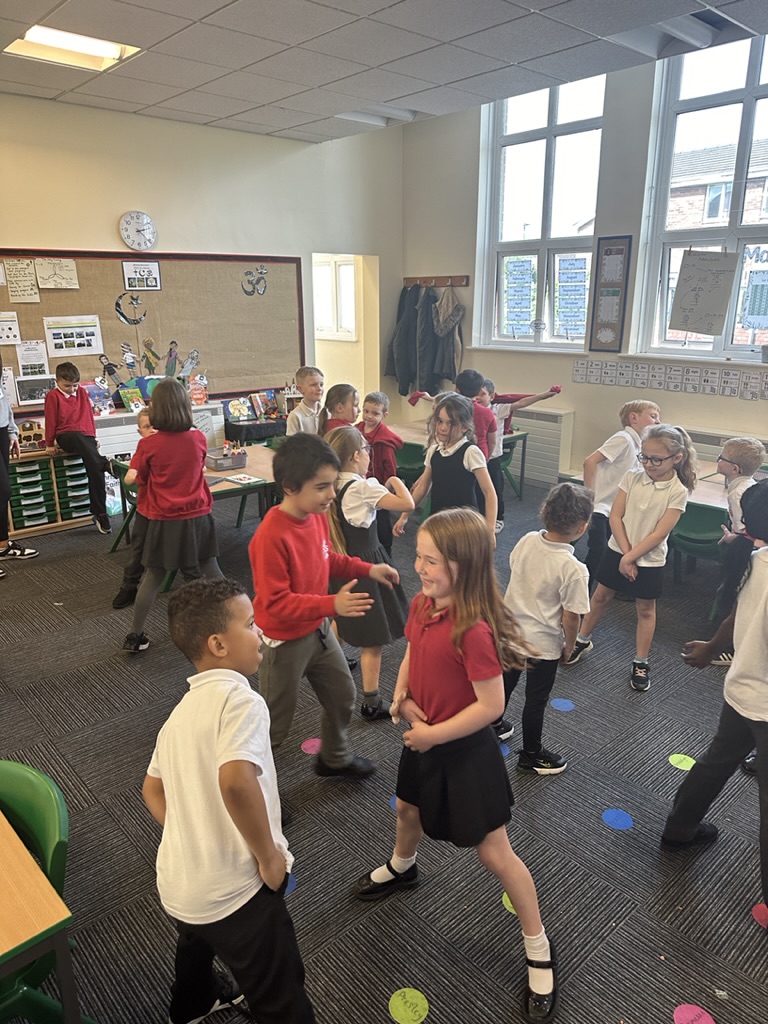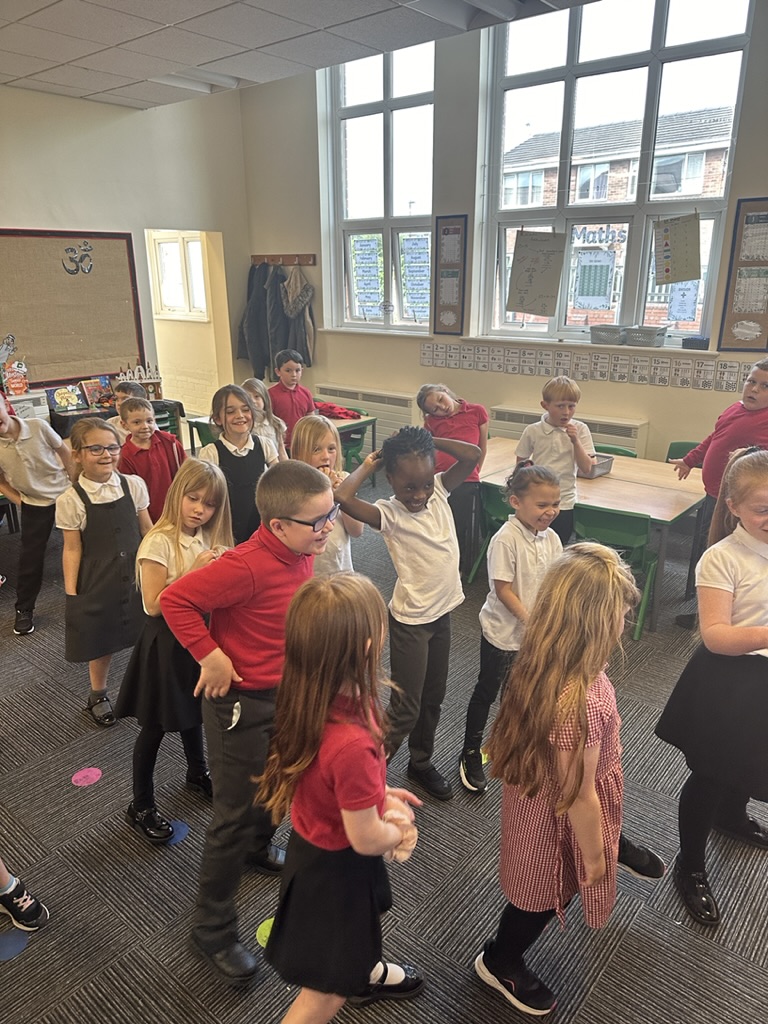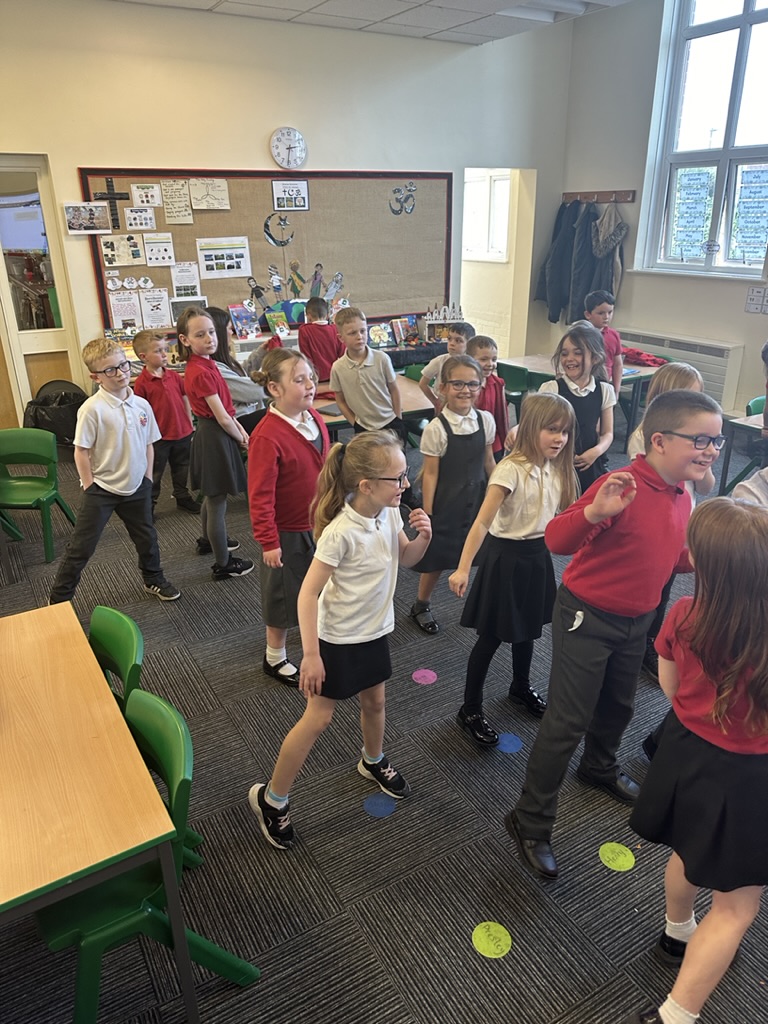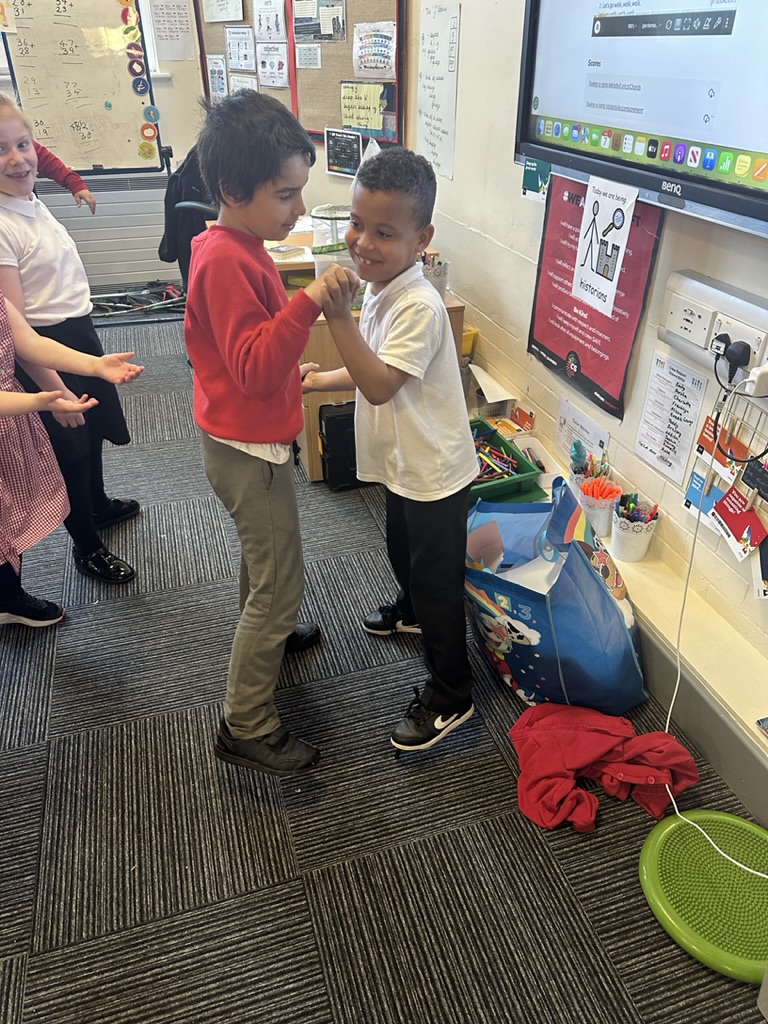We were all so proud of our year 5 children as they showcased their incredible guitar skills to the rest of the school and to parents and carers. Thank you to everyone that joined us 🙂
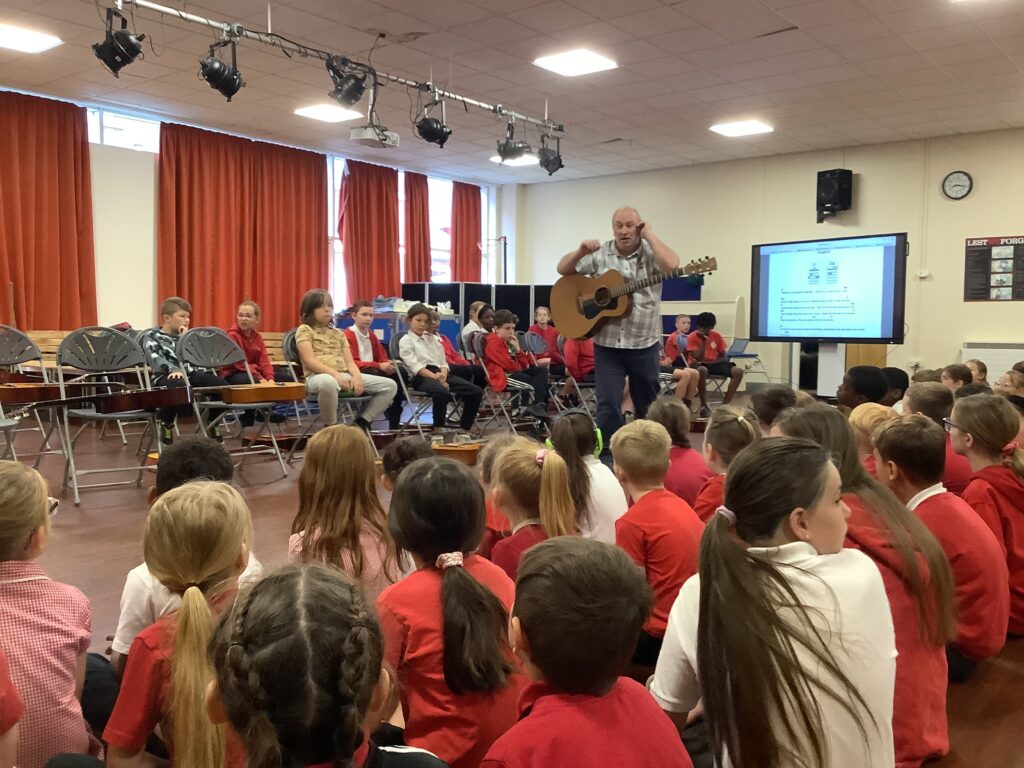

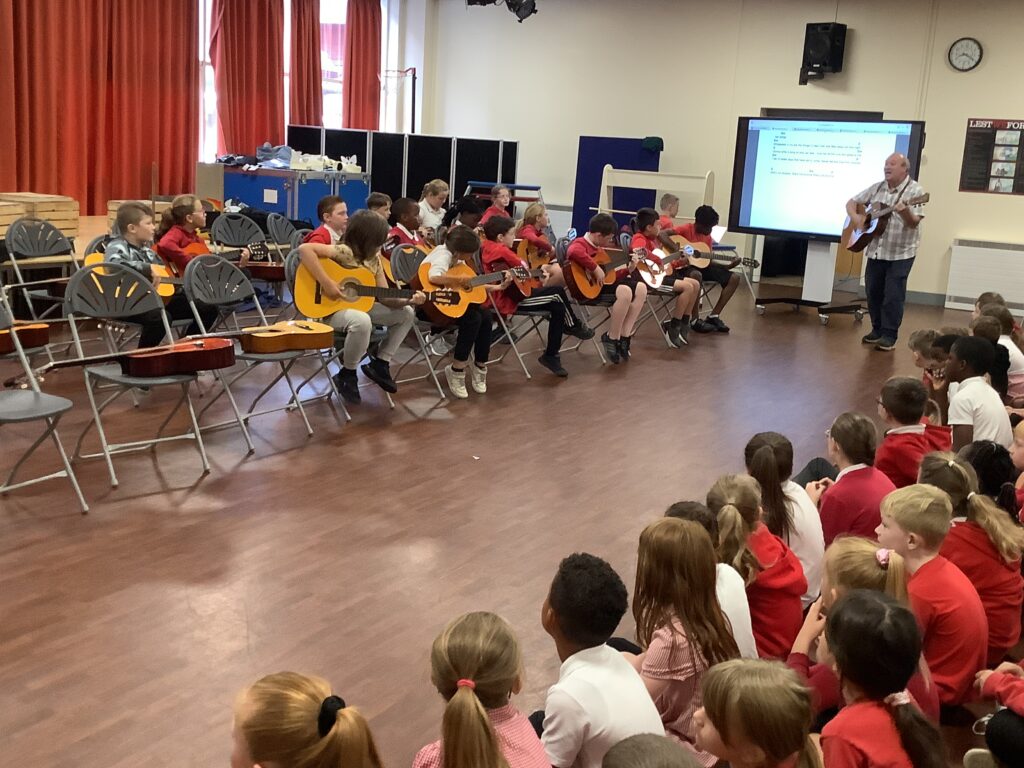
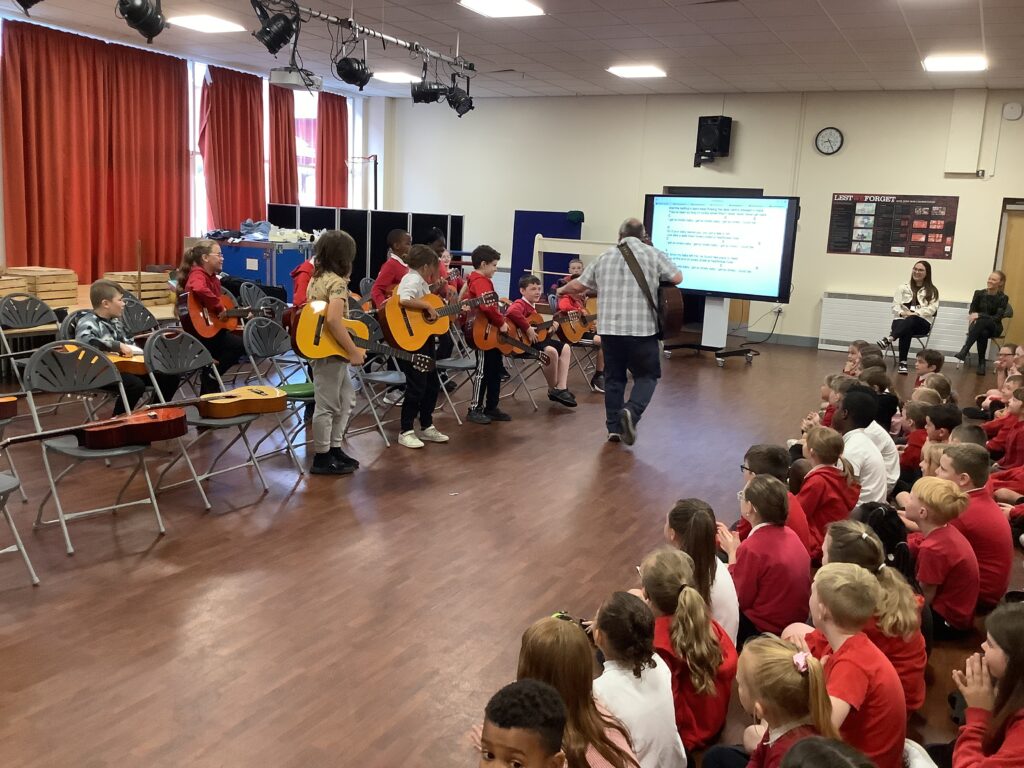

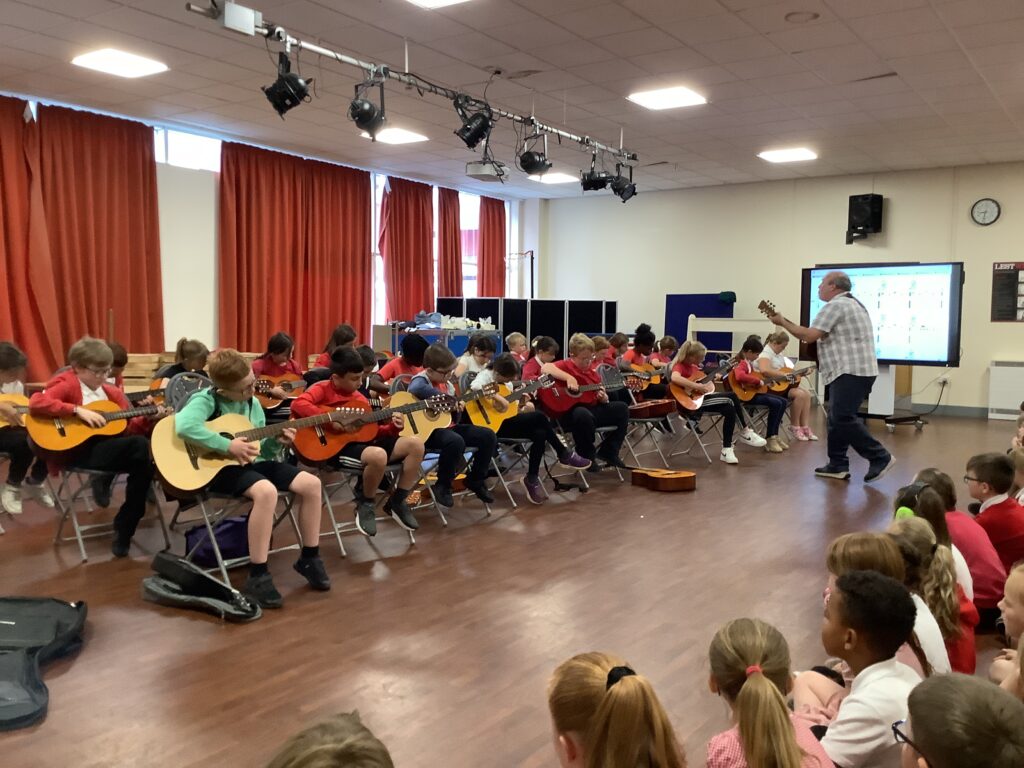
We were all so proud of our year 5 children as they showcased their incredible guitar skills to the rest of the school and to parents and carers. Thank you to everyone that joined us 🙂






Year 4 had the pleasure of working with the Zulus who have come in to teach the children African dancing and singing. We had lots of fun during these sessions and it was lovely to learn about another culture. We then had the opportunity to perform this for the rest of school and our parents who all got involved. This was definitely an experience we have enjoyed.

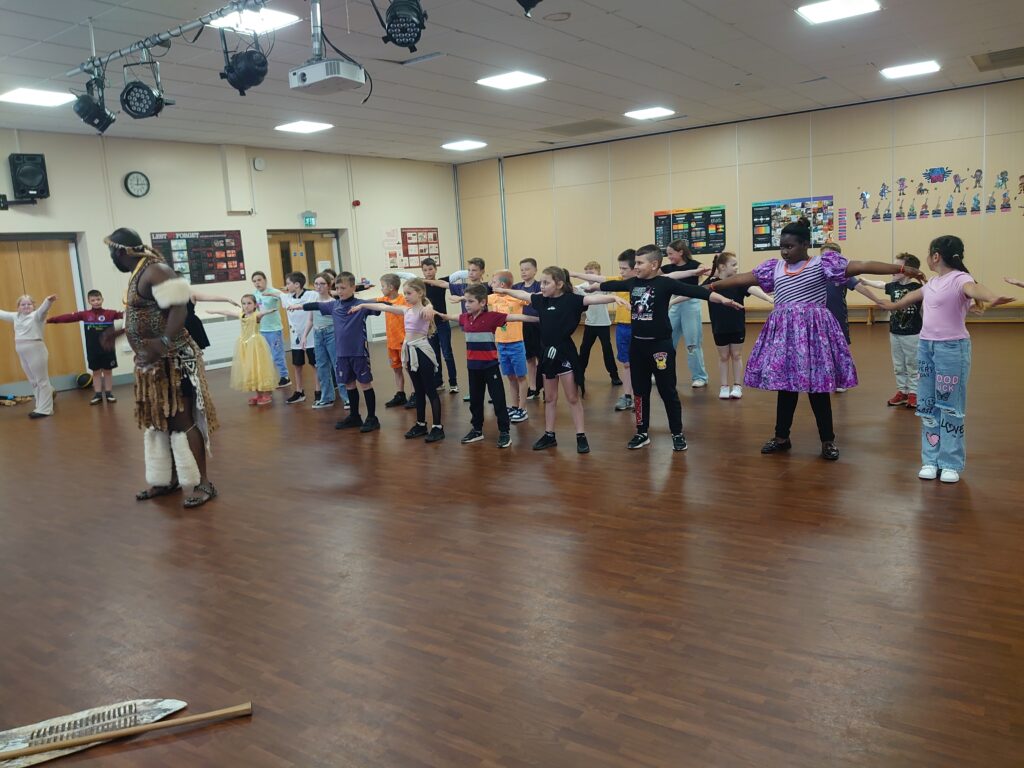

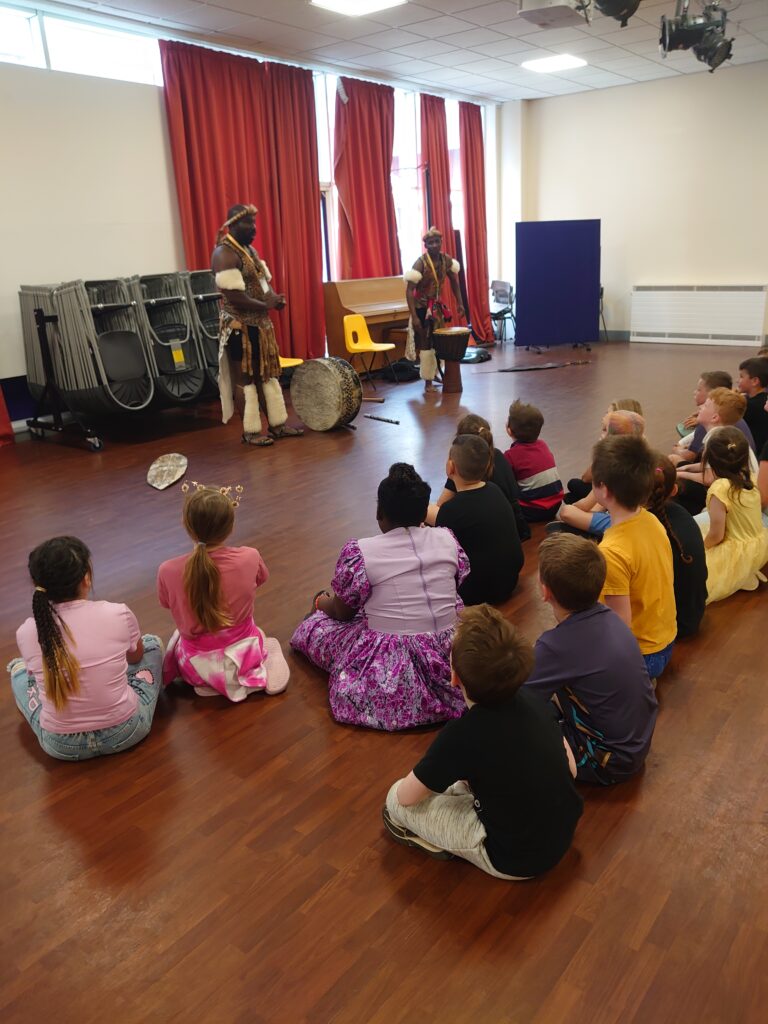

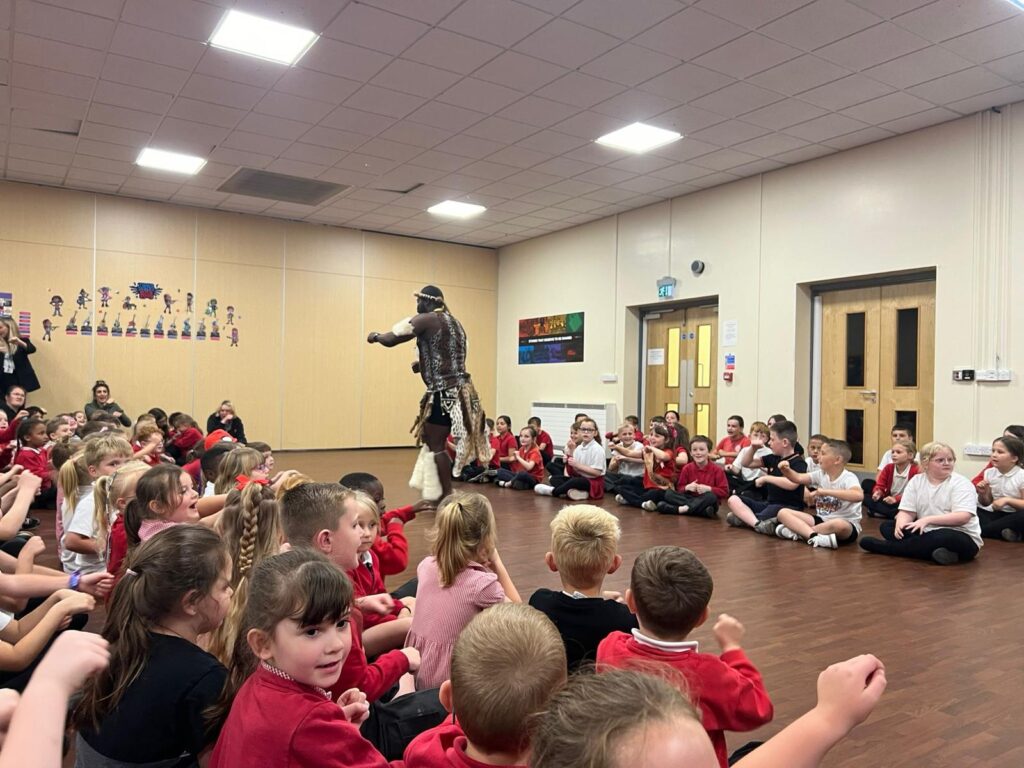
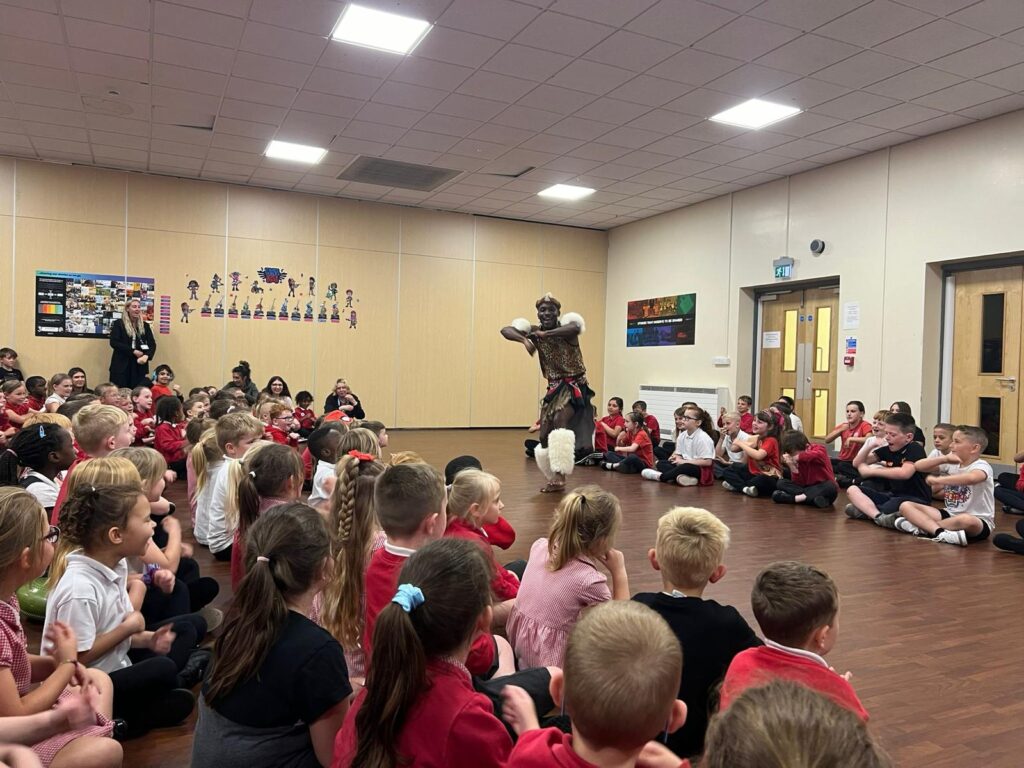
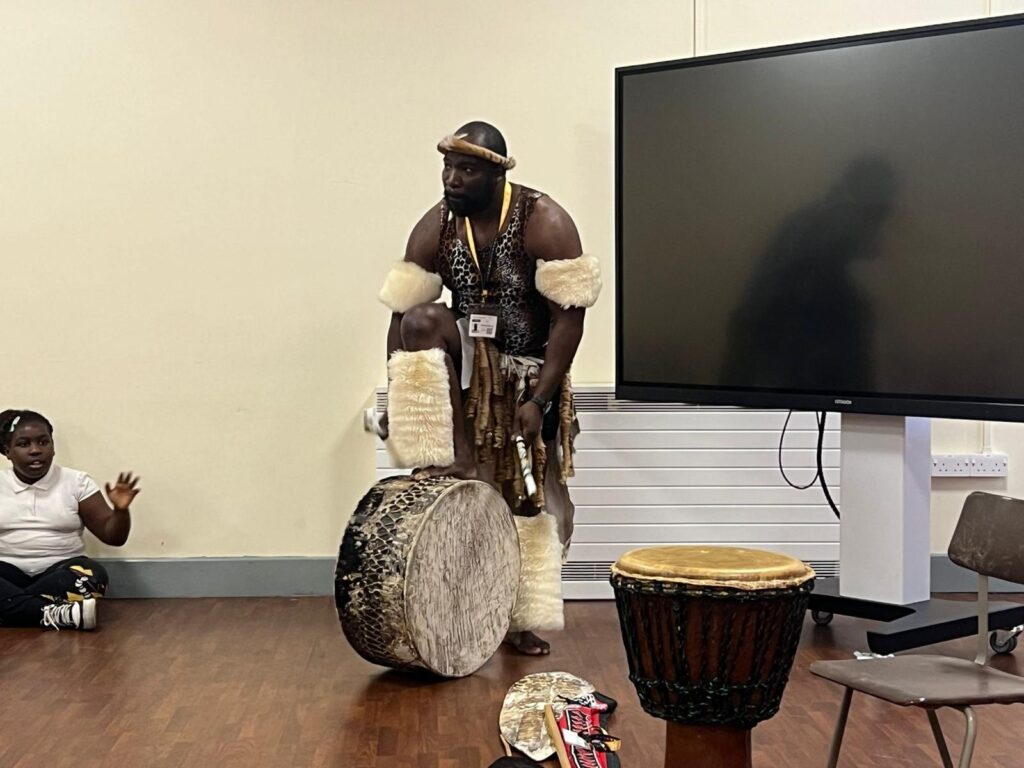
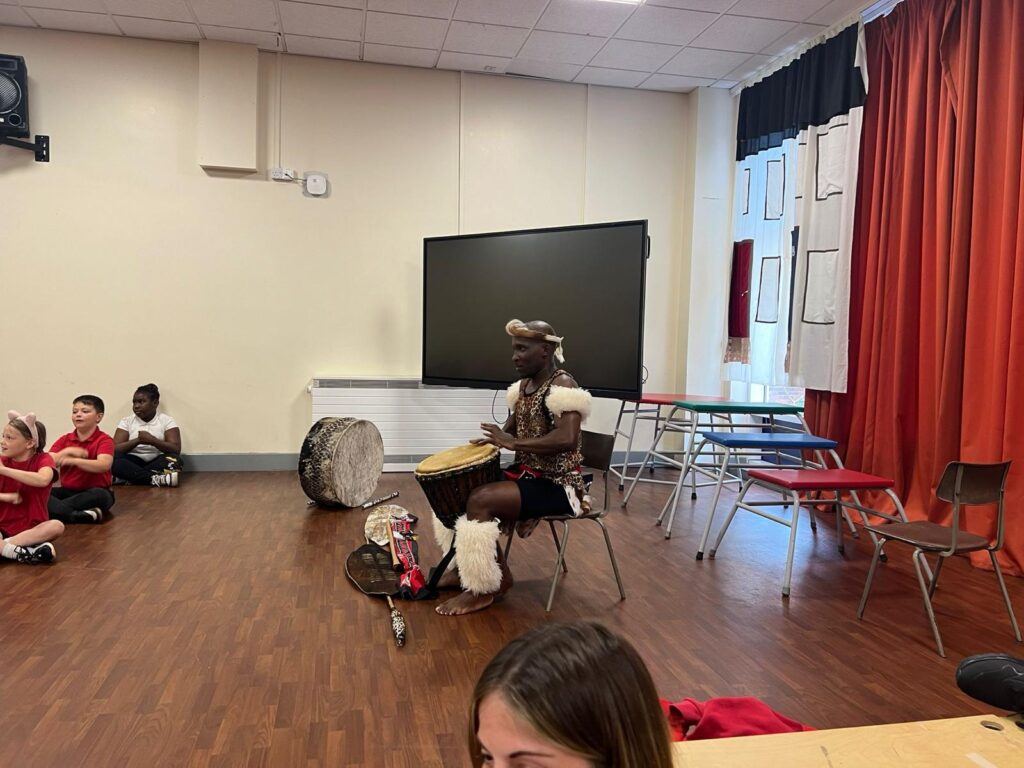
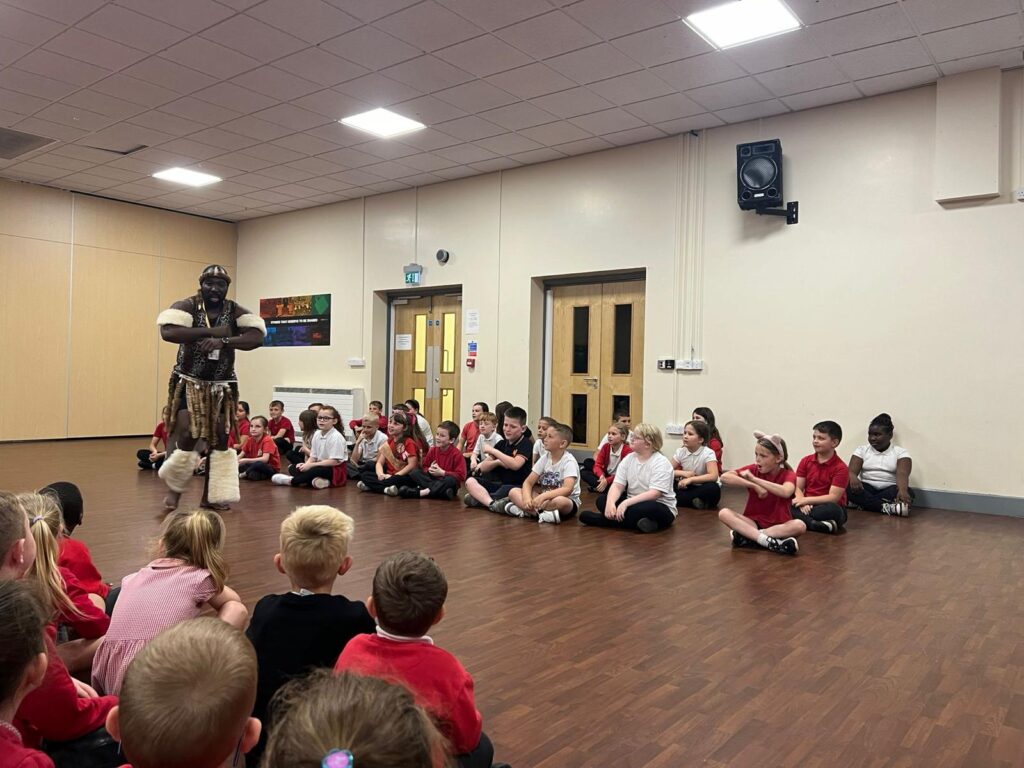
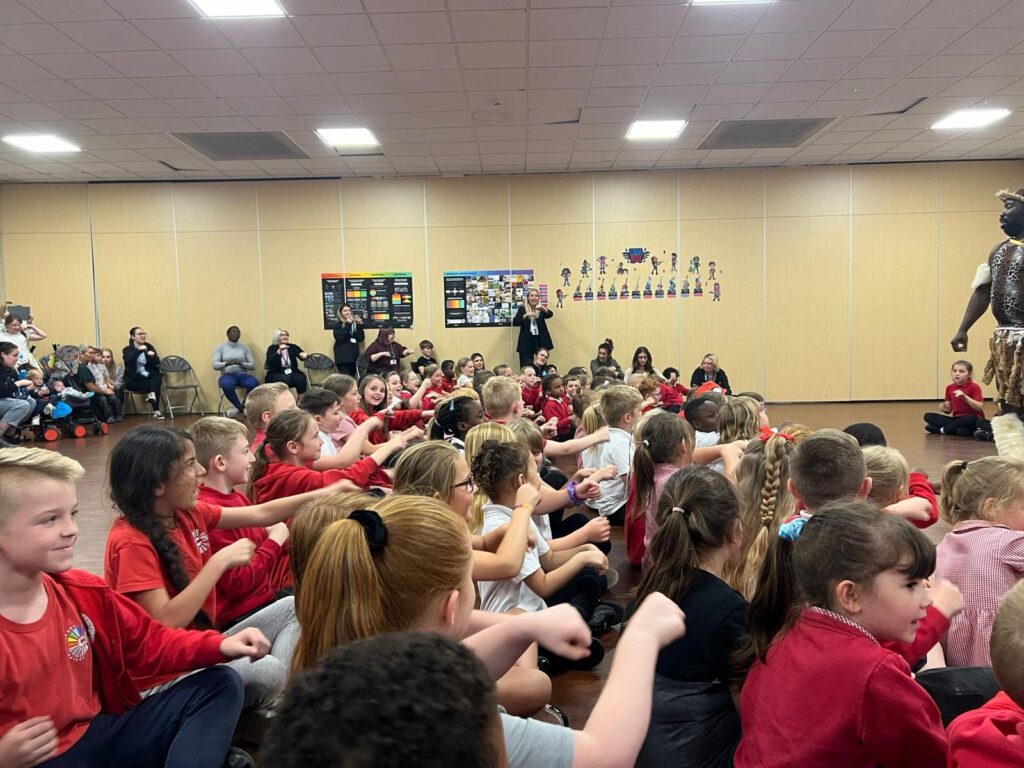

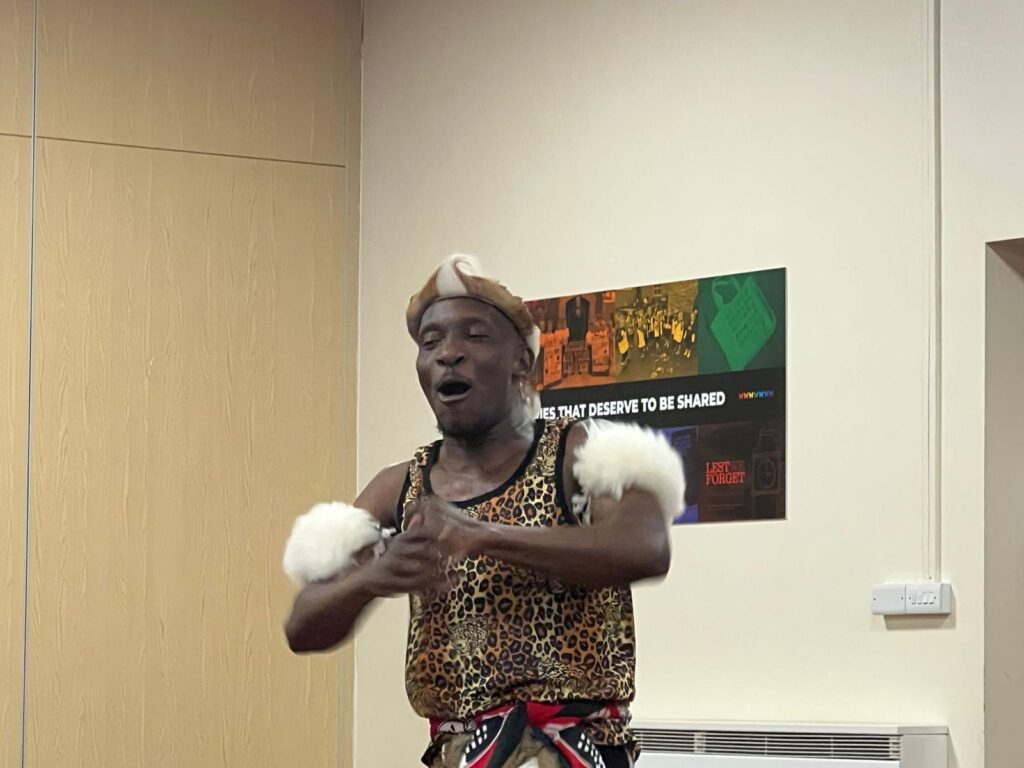
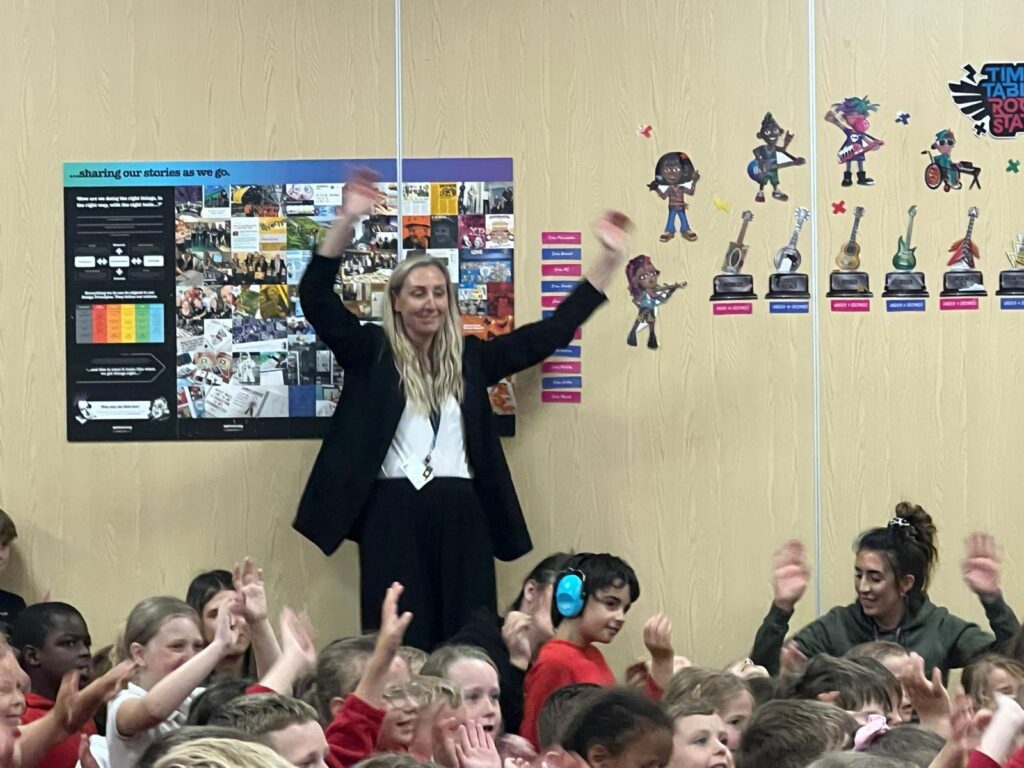


We love our weekly guitar lessons 🙂
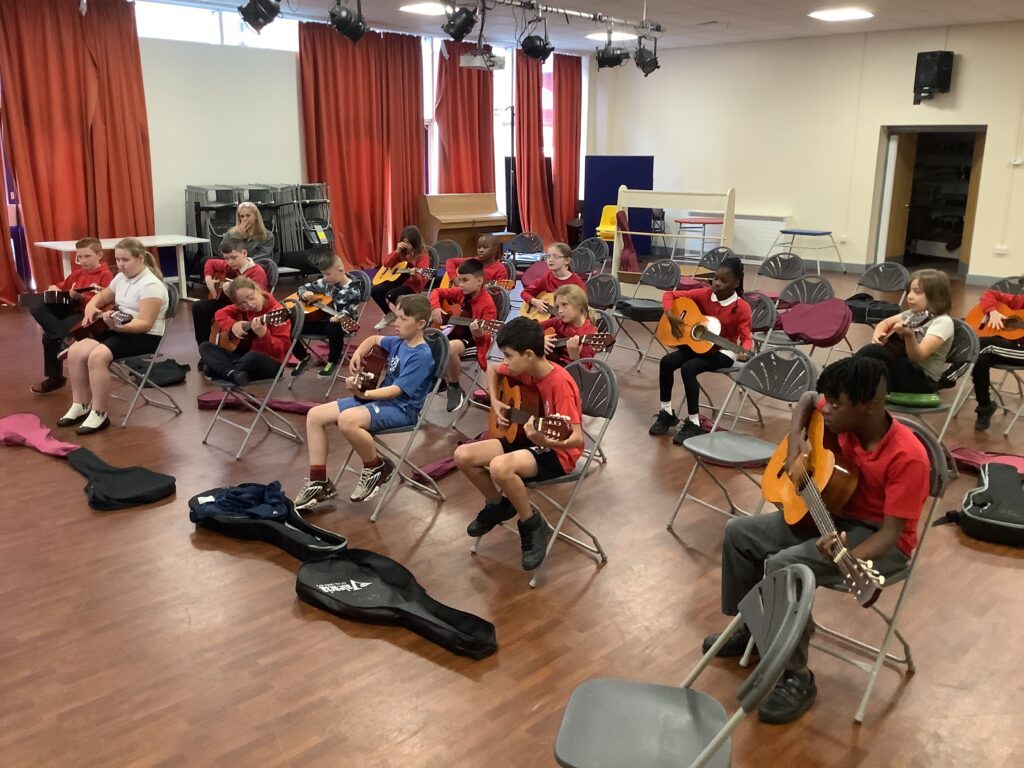
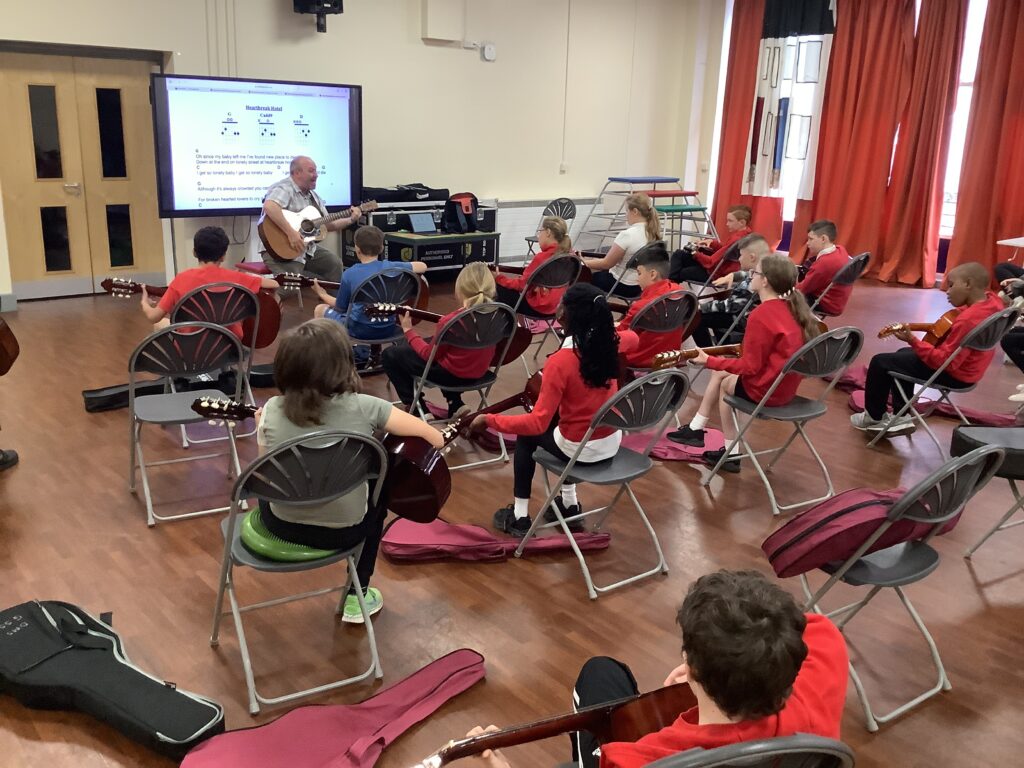

Our new unit of music ‘Race!’ focuses on the theme tune from the 1981 film ‘Chariots of Fire’.
We began by passing a rhythm around the crew in a circle. We kept the beat nice and steady, ensuring that the next person did not begin tapping their beat until the person before them had finished their 8 counts. Once we had managed to successfully pass the rhythm around the entire circle, we then challenged ourselves by passing the beat round again only this time, the next person had to begin once the person tapping had performed their first four taps. We found this tricky but we were resilient and managed eventually to get the rhythm around the entire circle!
We started our work on the Chariots of Fire theme tune by watching a video of key events from the film without sound. We discussed what we had seen and created a list of themes based on the clips. We discussed the idea of a pulse being present throughout the music that represented the ticking of a clock. We talked about why a clock might be important and decided that it was to represent the clock timing the race. Using a glockenspiel, we practised playing a quick pulse with the note C. Whilst it was tricky to play quickly, we had to really concentrate to make sure that we did not play too fast or too slow and that we stayed in time with the other members of our crew.
As well as a ticking clock, the idea of a short motif representing a cheering crowd is included within the piece. We discussed how two notes (C and G) are used however the duration of the second note (G) is longer than C so would need to be held on for longer. Using untuned percussion instruments we practised creating this motif.
We split into two groups, one group focusing on the quick pulse of the ticking clock, the other focusing on the short motif of the cheering crowd. Layering these two elements together allowed us to see how piece of music are structured and also how stories can be told using just instruments.
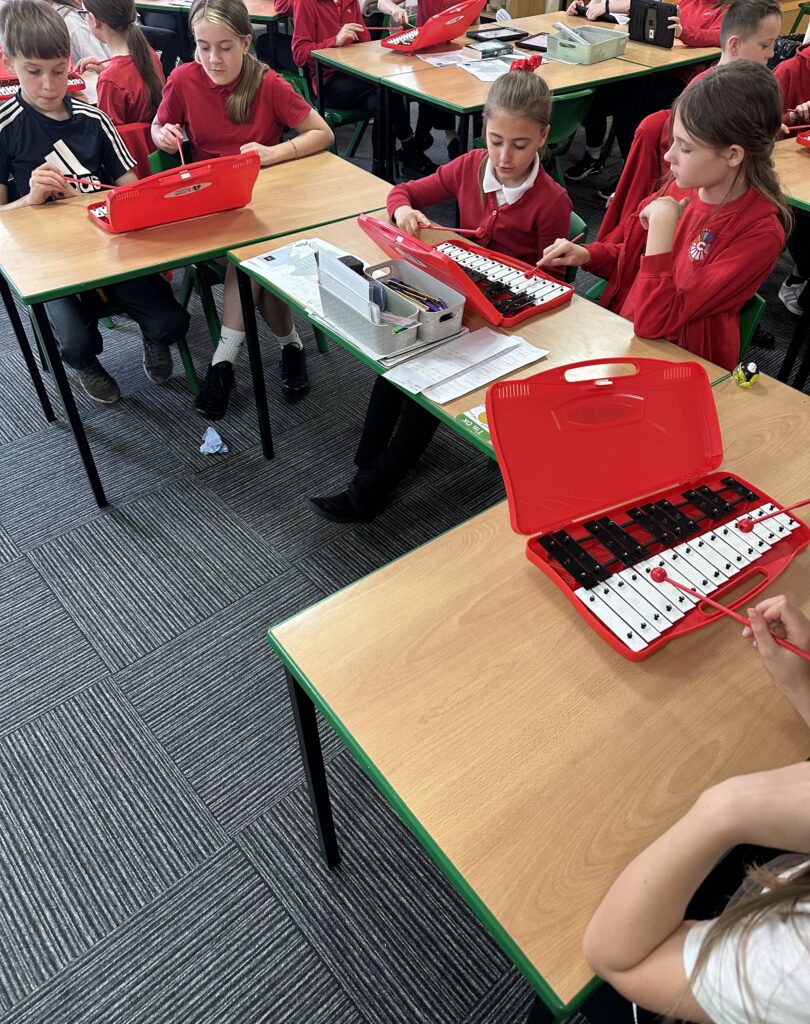
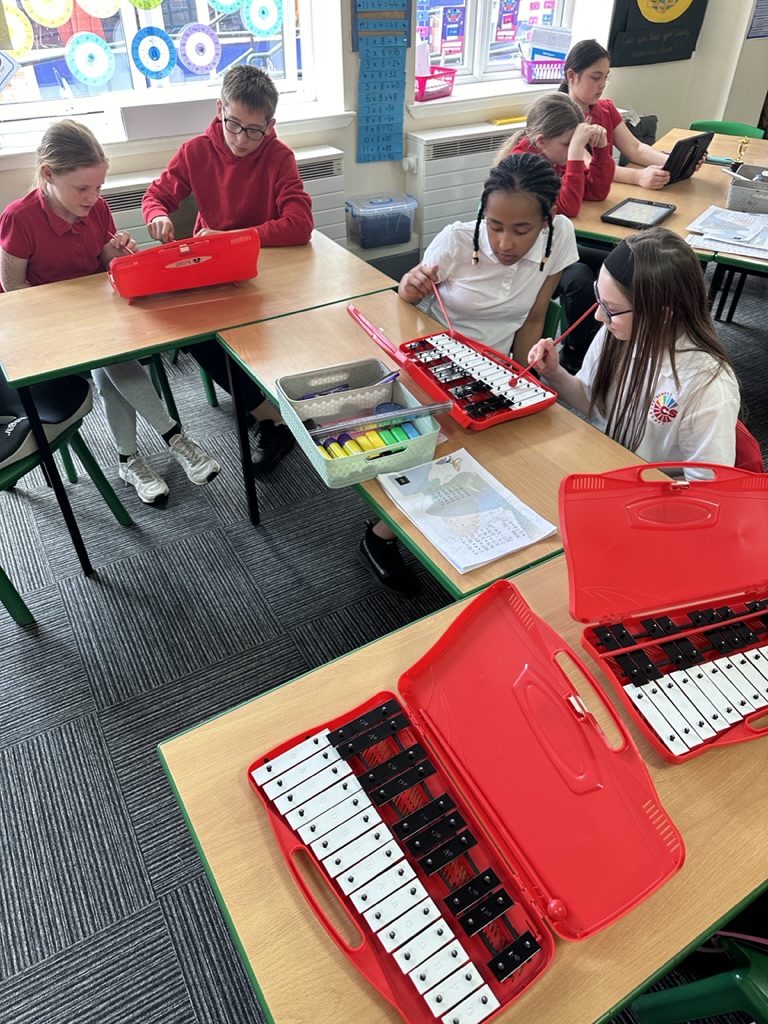
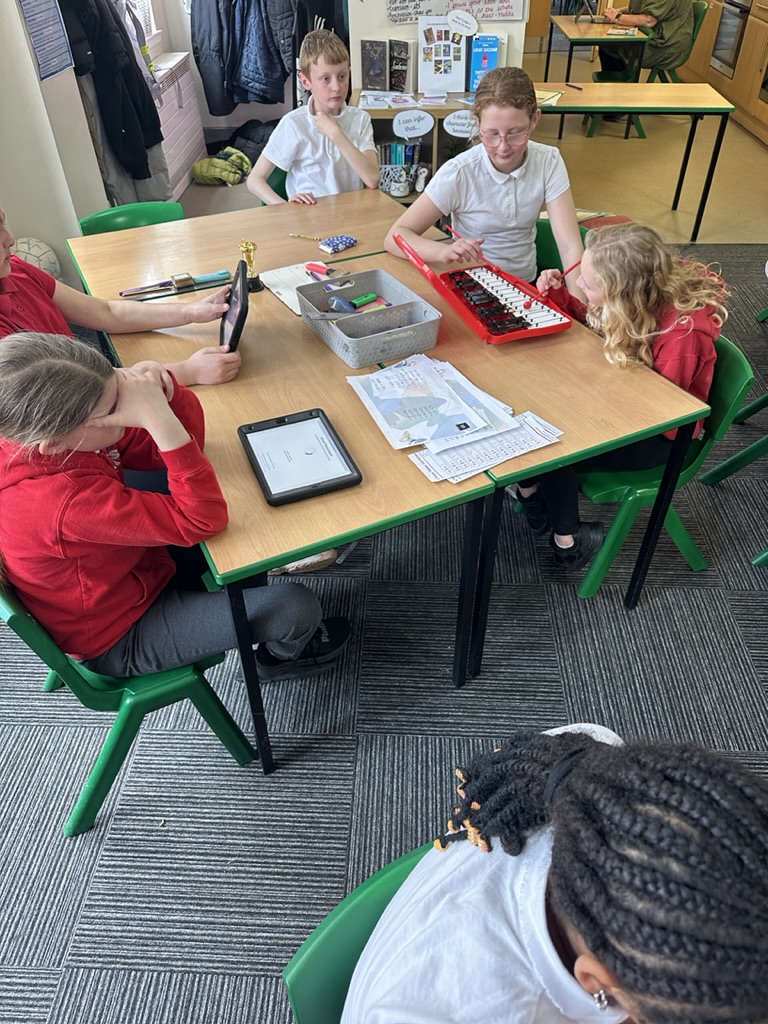
We warmed up our voices by singing the ‘Cowboy song’, a call-and-response song that uses the pentatonic scale C-D-E-G-A.
We then watched a video of Bobby McFerrin. The performance showcased the power of the pentatonic scale and allowed for us to see how the pitch can move higher and lower, ascending and descending in scale. We talked about how moving between notes can also mean moving in and out of order, as long as the notes used are within the correct pentatonic scale.
To put this knowledge into practise, we began to improvise melodies within the pentatonic scale C-D-E-G-A on the glockenspiel. Working with a partner, we identified how the shape of the pitch moved up and down. We then played a game of ‘copy me’ where one partner had to create a short pattern using the notes from the pentatonic scale, the other partner had to listen and the repeat the pattern back before swapping.
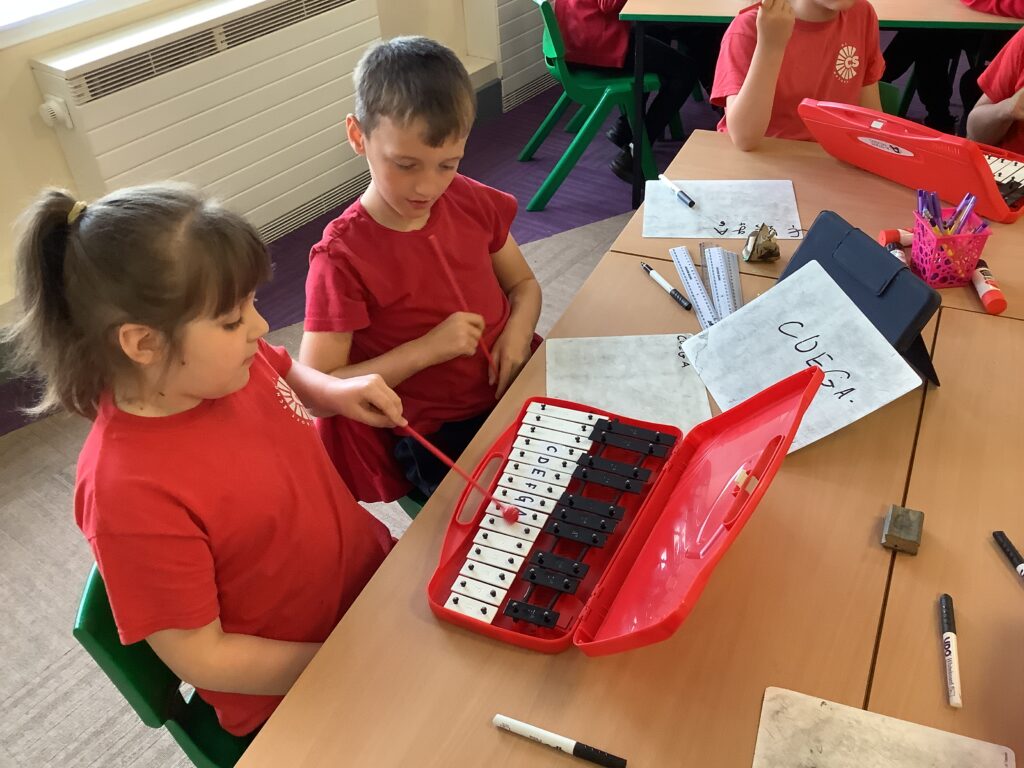
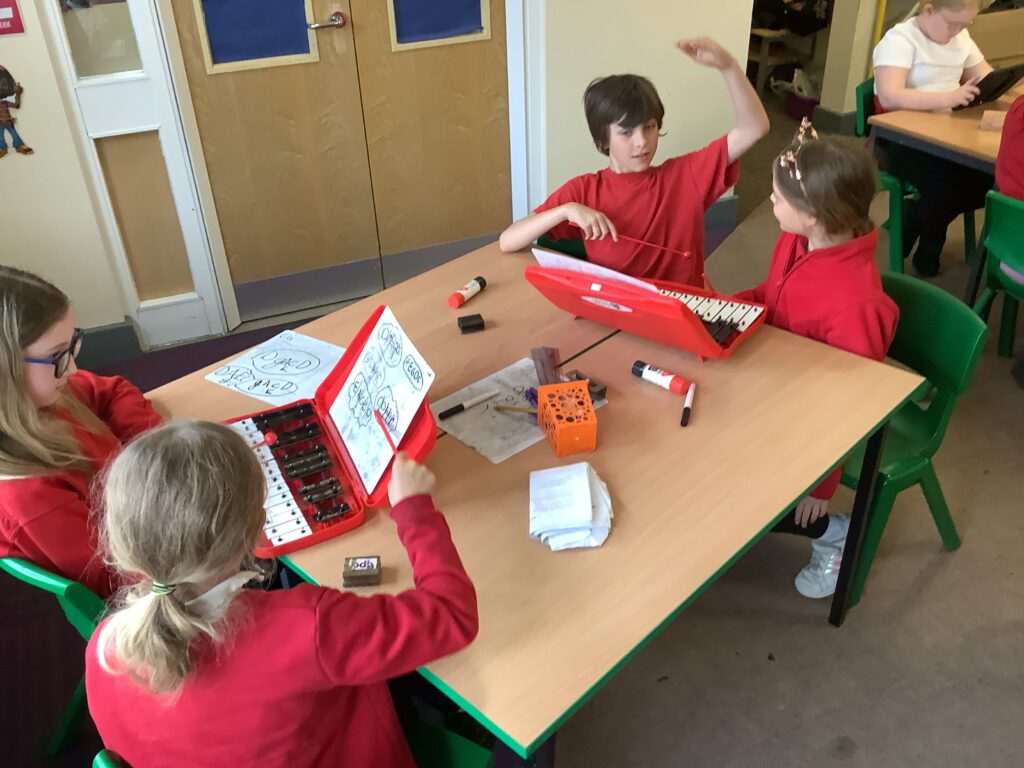
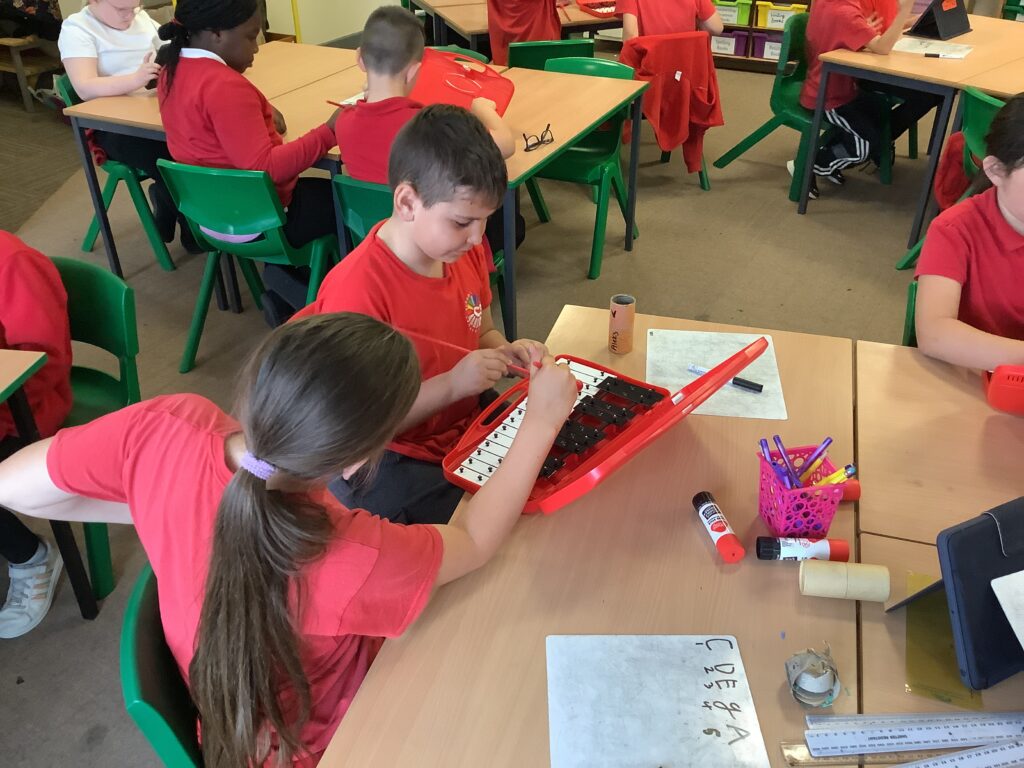


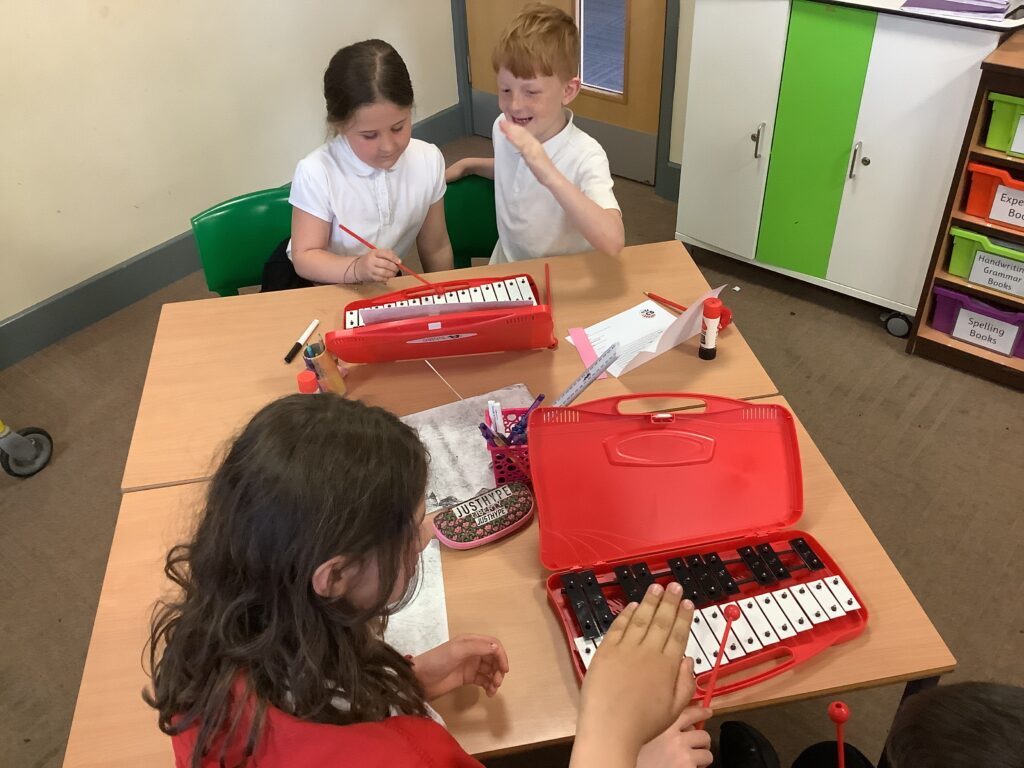



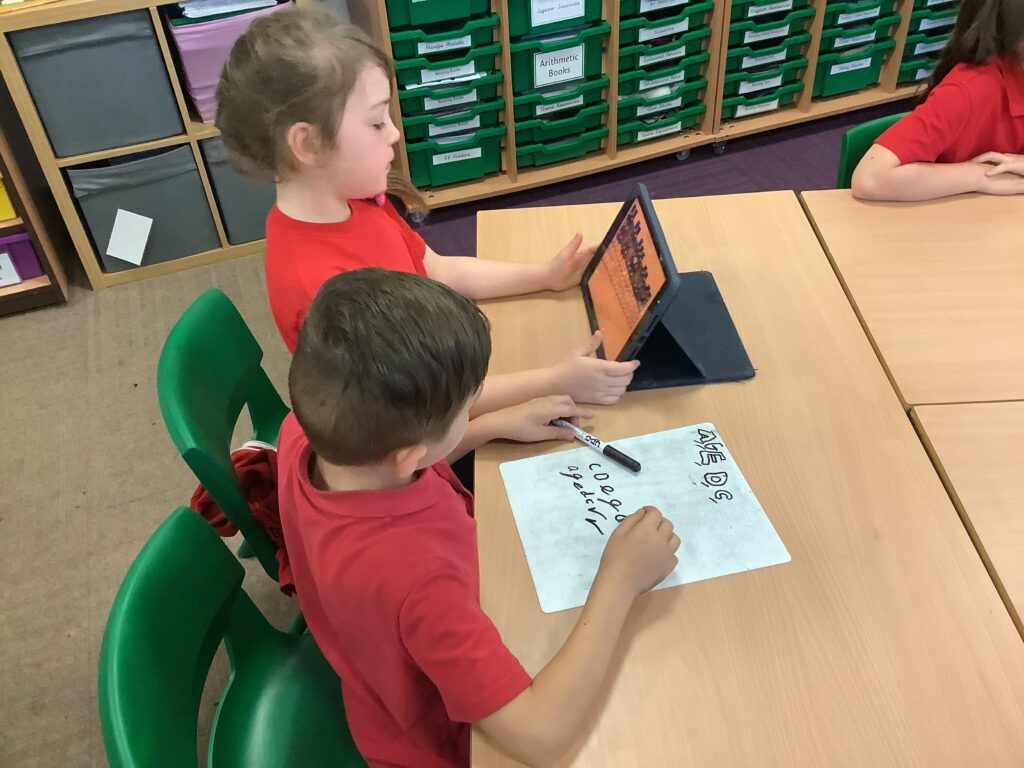
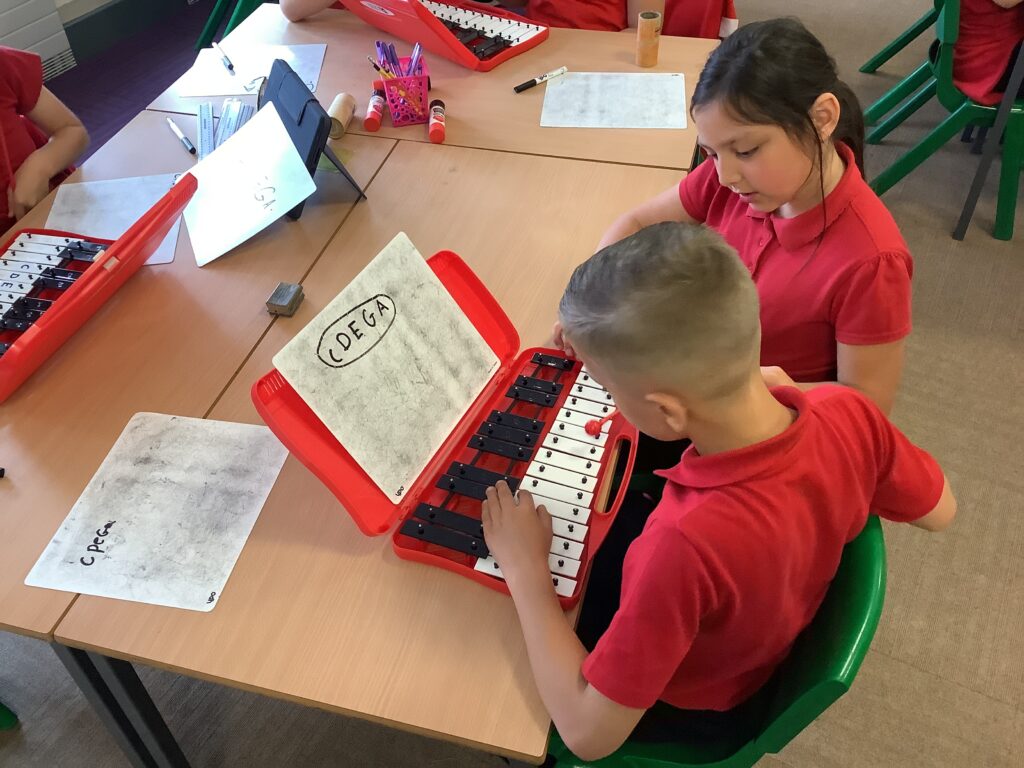


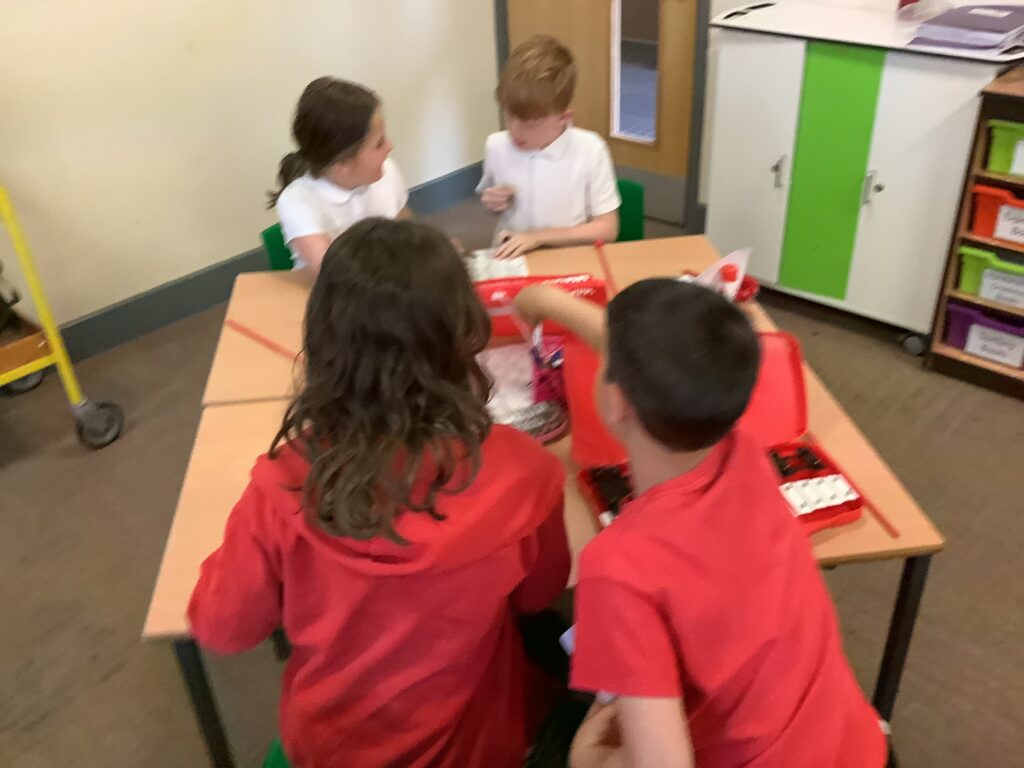
We began our new unit of music ‘Global Pentatonics’ by warming up our voices with a call-and-response song that uses the pentatonic scale G-A-B-D-E.
After discussing what a pentatonic scale is, we listened to a number of pieces of music that contain elements of a pentatonic scale (Skye boat song, Om Namah Shivaya, Busy weaving, Desert blues). We discussed each piece, listening to information about the background behind it and then compared the musical features of each piece.
We then used glockenspiels to identify the pentatonic scale C-D-E-G-A and practised playing these notes as a scale ascending and then descending. We tried hard to play in time with the rest of our crew.
As we continue with our unit ‘Fly with the stars’, we began by recapping crotchet and quaver patterns using the walk and jogging action words to help us think of the duration of each note.
We then looked at the song structure of the chorus of ‘Fly with the stars’ and noticed that the actions weren’t given to us, unlike the introduction and verse 1. We came up with a selection of suggestions for each action before finally making our decision. We practised performing each action with the music, ensuring we were counting the correct amount of beats for each action. We noticed that each section was quite repetitive which made it easier for us to learn each action.
We then recapped verse 1, only this time we added in the element of using crotchets and quavers to create our own pattern to play as an accompaniment to the song. We looked at using the notes A and C and worked with a partner to experiment with different variations of pattern using the glockenspiels.
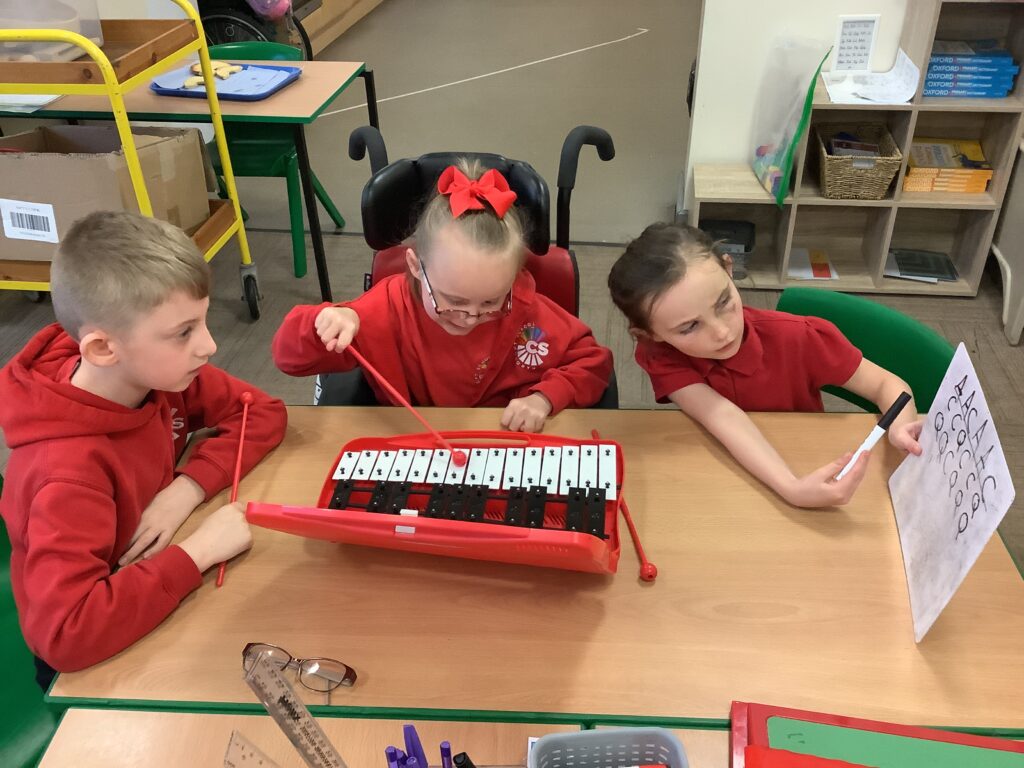
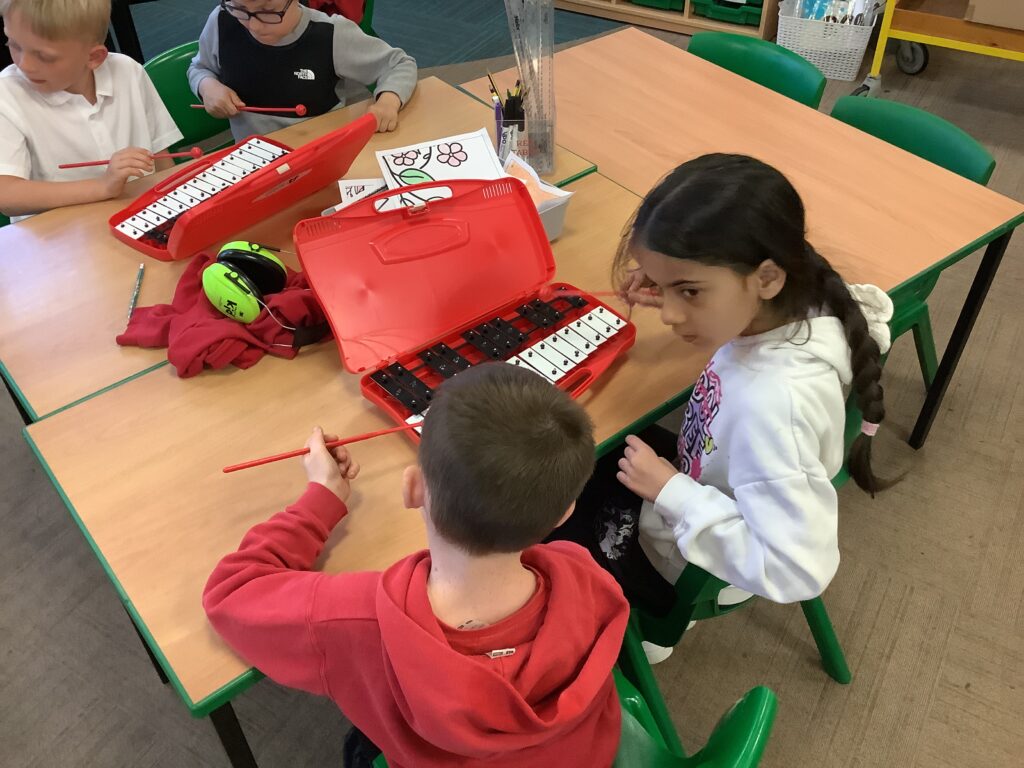
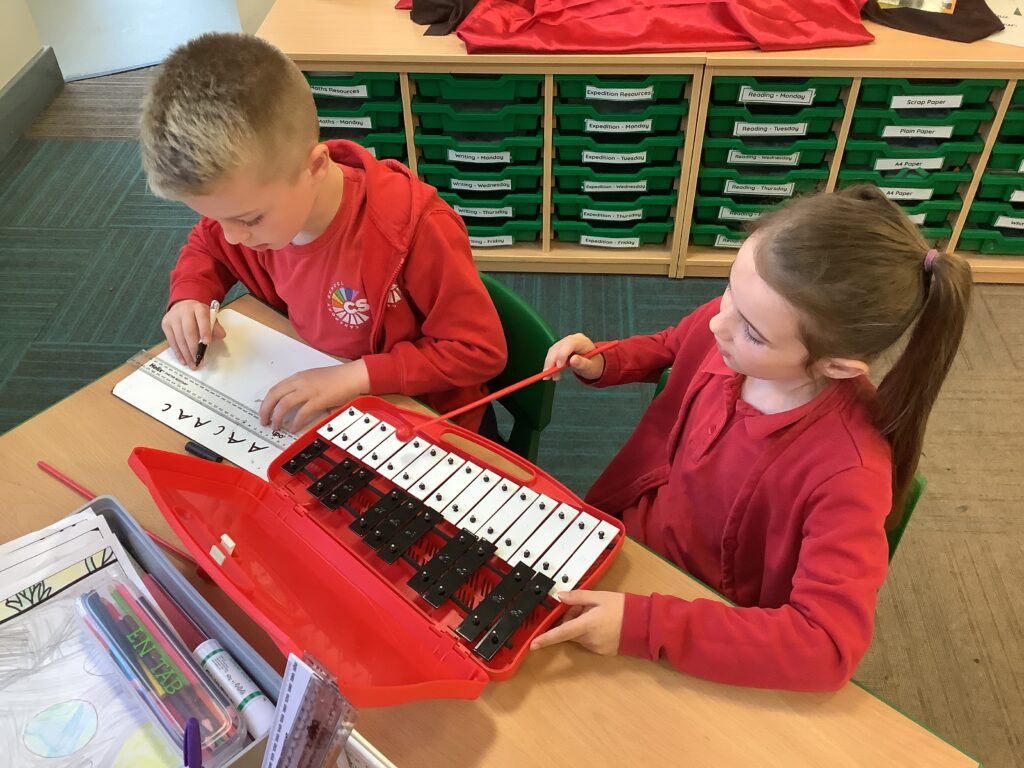
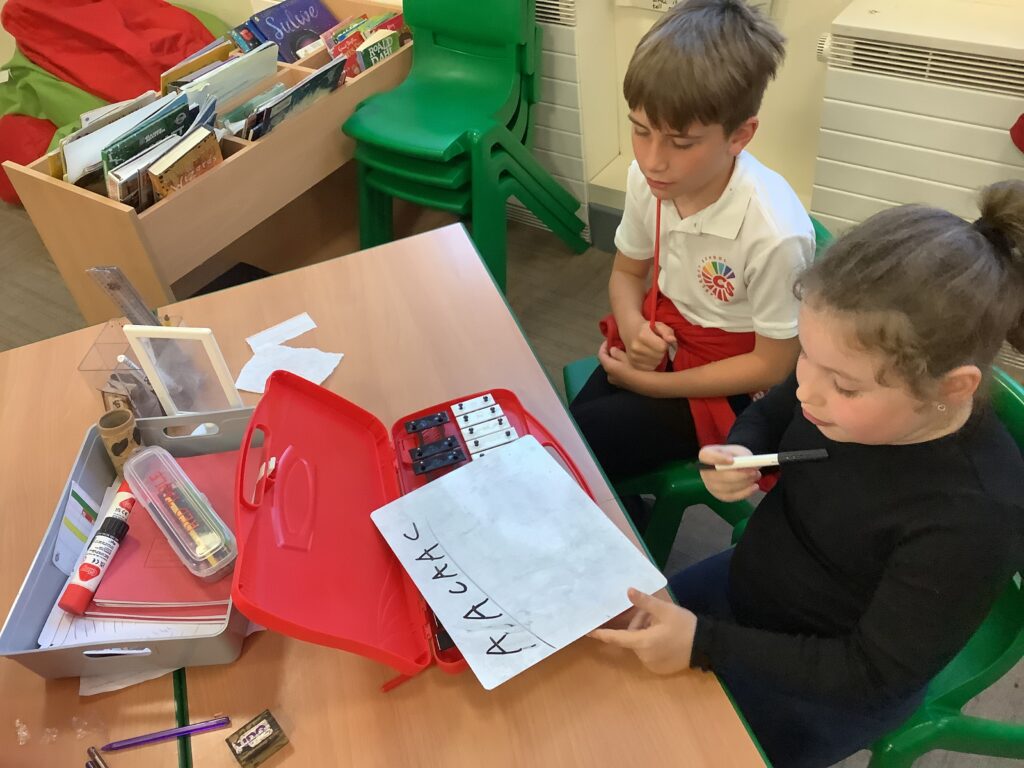



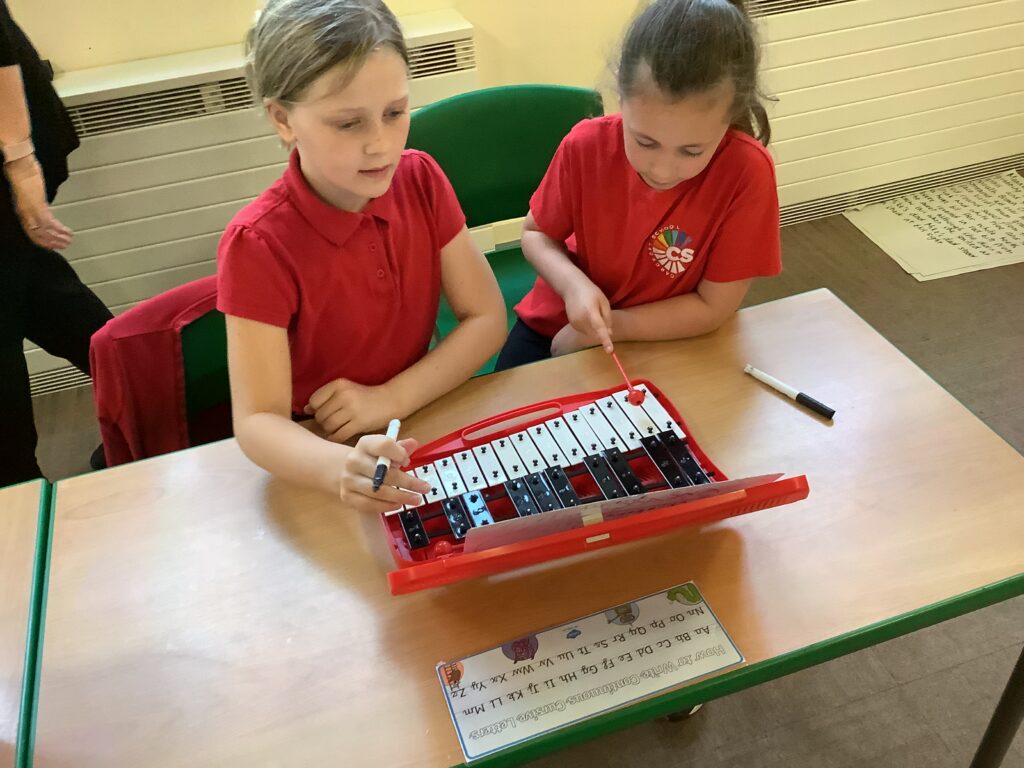
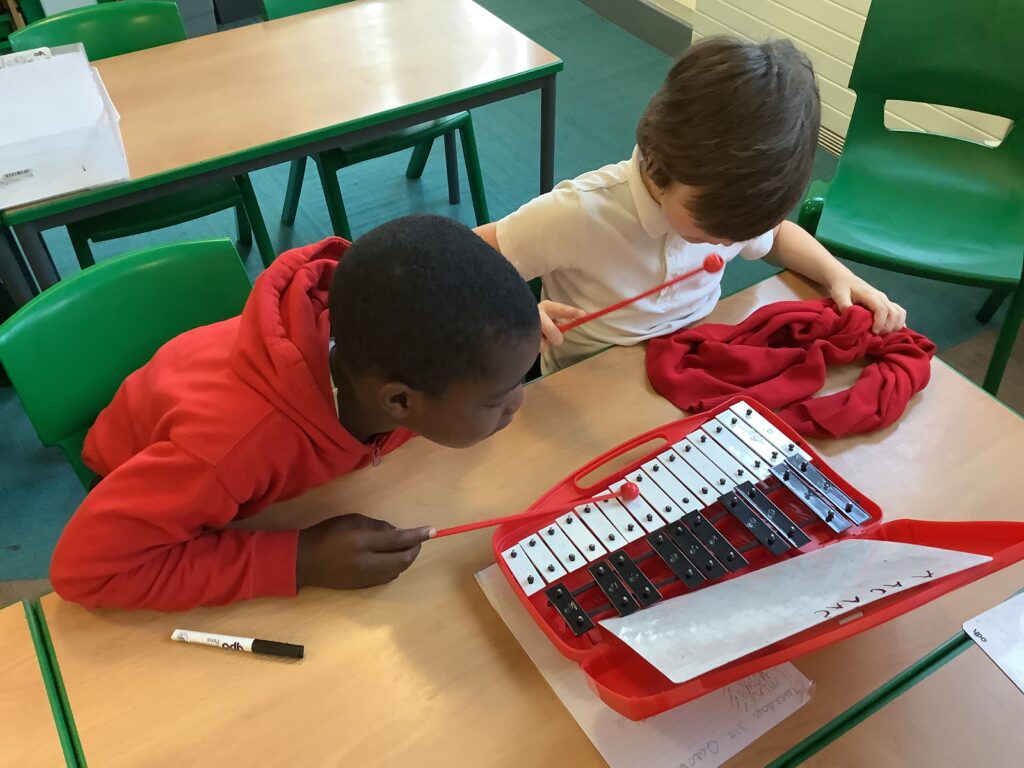
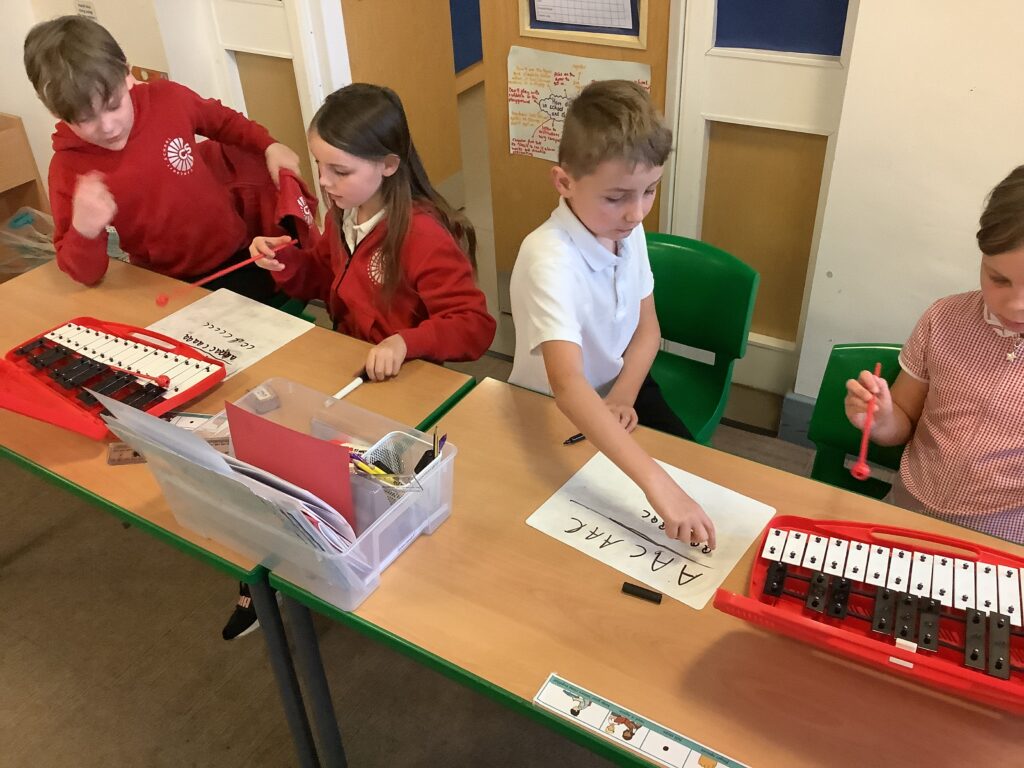
To begin our new unit of music ‘Fly with the stars’, we learnt a new warm up song called ‘This is what it sounds like’. We each had an instrument that you either shook or drummed in order for it to make a sound. We recognised there was a call-and-response element to the song. We realised that we were able to ‘respond’ by clapping as a crew before then having to listen to carefully to the lyrics to see whether the children with a shaker needed to join in or whether the children with a drum needed to join in.



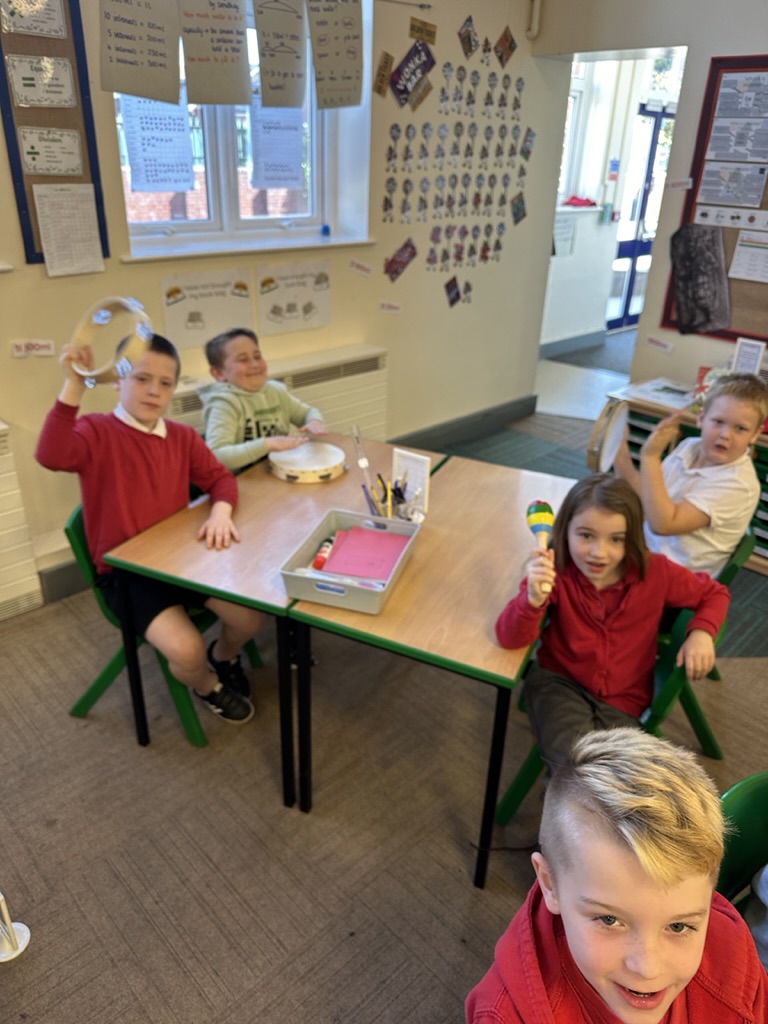

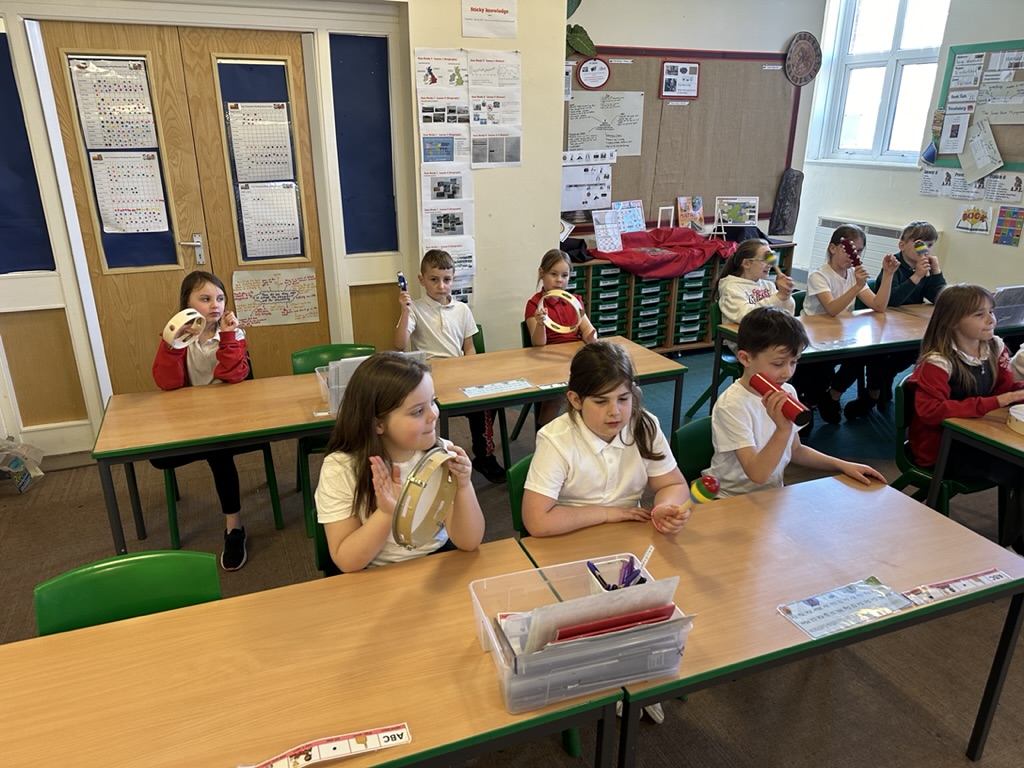
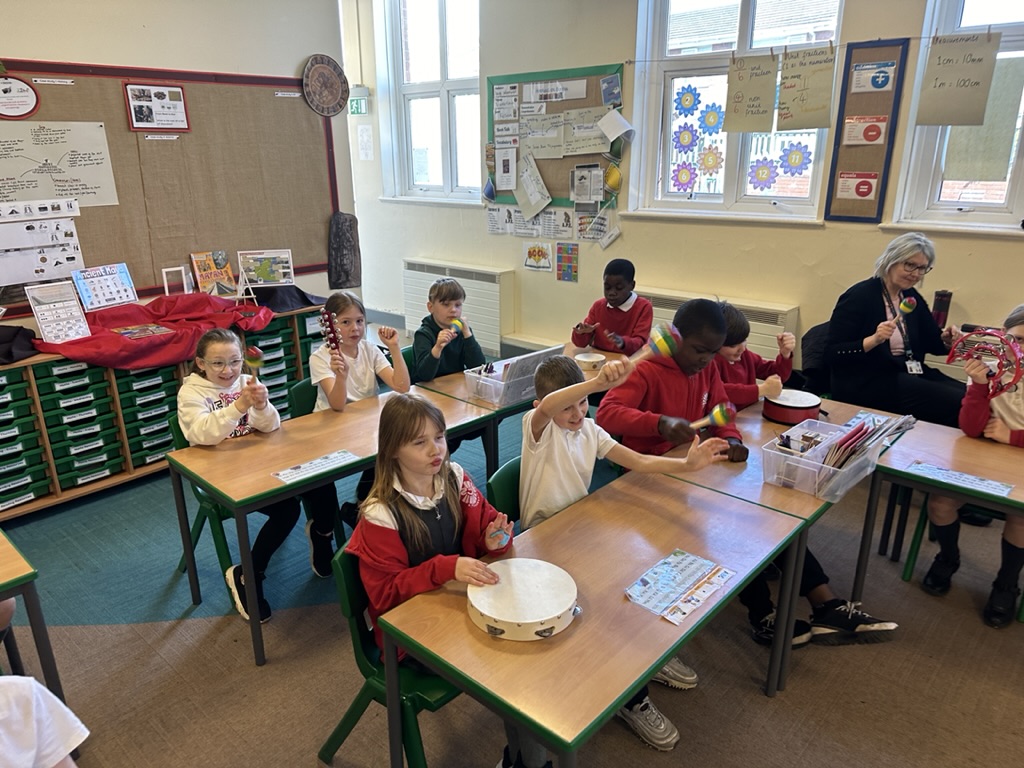

We then recapped what crotchet and quavers are by moving around the classroom using the ‘action word’ associated with the corresponding rhythm. For crotchets we used the action ‘walk’, for quavers we used the action ‘jogging’. We moved around the classroom ensuring we were listening to the rhythm being called out so that we could move appropriately in the correct way. We then listened to two pieces of music, ‘Soldiers’ march’ by Robert Schumann, and ‘Supercalifragilisticexpialidocious’ by Richard M. and Robert B. Sherman. We had to listen to each piece and say which duration we thought fit each piece best.
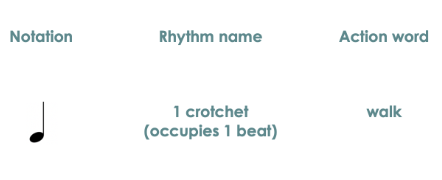


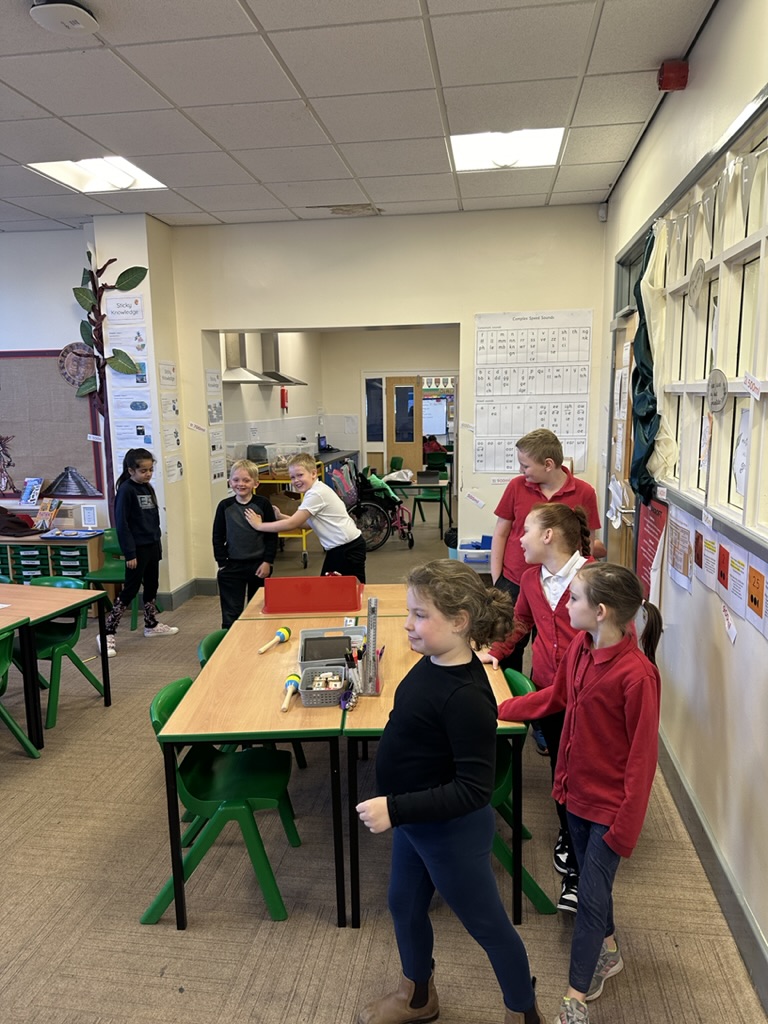
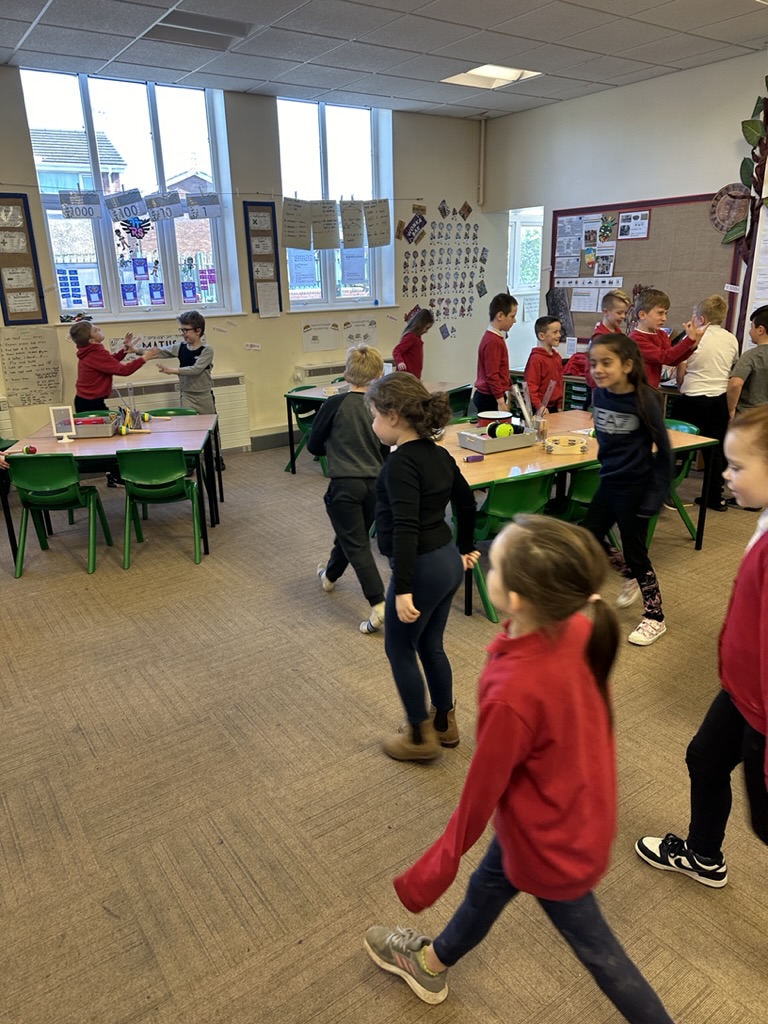


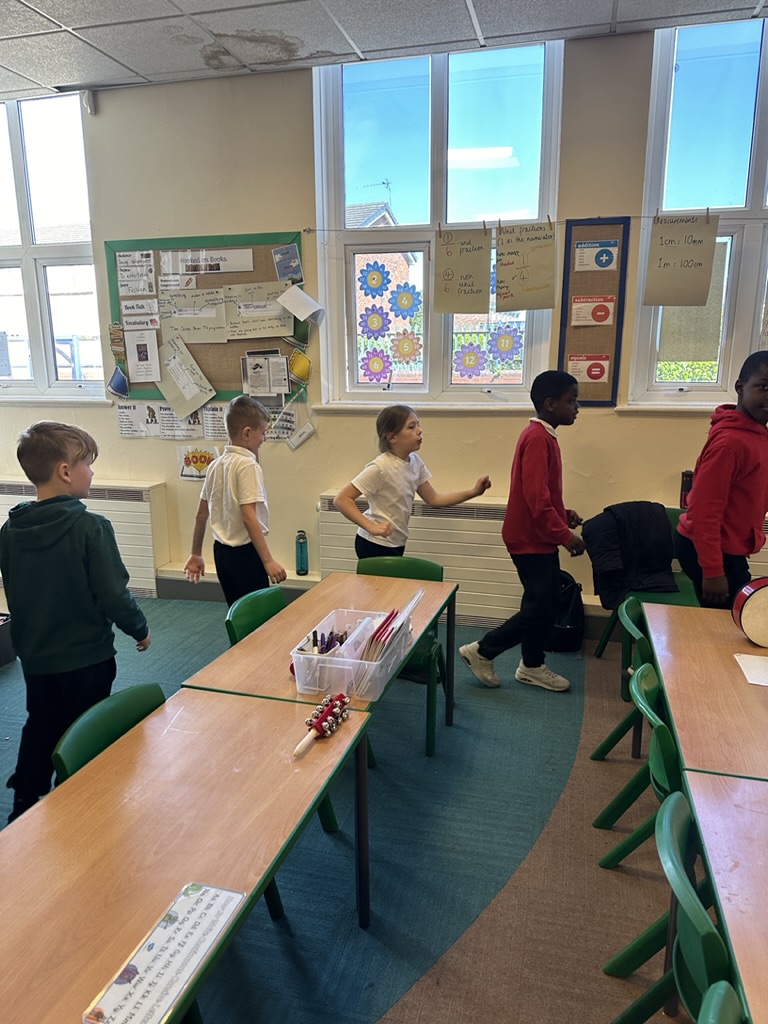
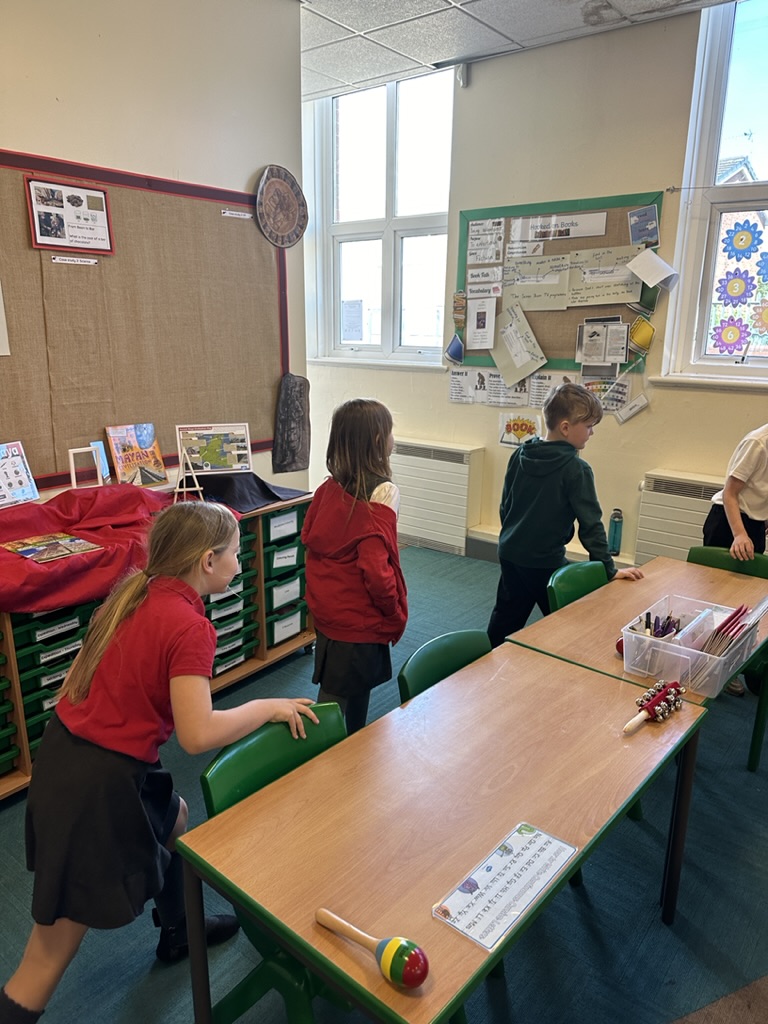
We began to look at the song structure for the introduction and verse 1 of our new song ‘Fly with the stars’. We used this time to learn the actions to go alongside the lyrics and we focused on ensuring we were able to count for the correct amount of time whilst performing the action. We continued to rehearse this until we were able to do it without too much prompting from Miss McGlone!

We finished by recapping and embedding our knowledge of crotchet and quaver patterns by playing a ‘copy me’ game using action words to help us with the duration of each note. We even added in the idea of having a rest beat within a short pattern.

Our new unit of music is called ‘ Charlie Chaplin’. We began by looking at the duration of a note. Duration is the length of the note. We were introduced to quavers and semibreves and we looked at how these notes would be written on a musical score. Each symbol looked different and therefore showed us how long to hold the note for.
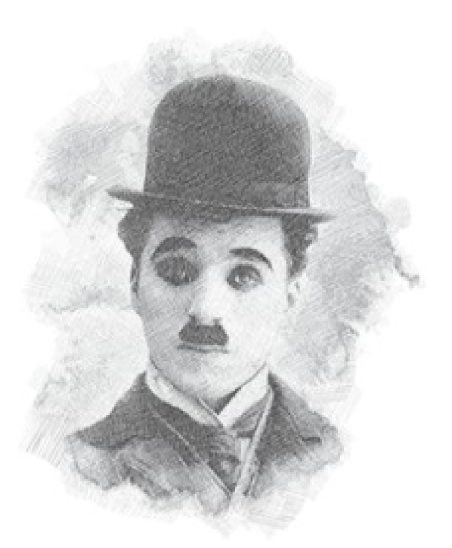
We then played a game where we had to create long and short sounds whilst moving our hands to match the length of note.

Once we had discussed long and short notes, we looked at our collection of untuned percussion instruments and decided as a crew which instruments we thought would make only short notes, only long notes, and those that could be played in a way to create both notes and we sorted them into piles.
We then watched a short clip of a Charlie Chaplin scene (The lion’s cage) from his film ‘The circus’. After discussing Charlie Chaplin and what he was famous for, we watched the clip without sound so that we could focus on the story being told. Once we had discussed the key events from the clip, we watched it again, this time thinking about things that could be represented with a short sound, and then again to identify things that could be represented with a long sound.
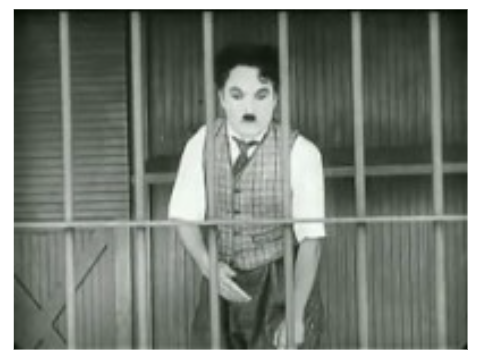
Using the instruments we had separated, we began to think about the short and long notes that could be used to show various parts of the clip whilst also thinking about whether certain instruments would be appropriate to represent certain parts of the clip.
To finish our work on ‘Swing-a-long’ we worked with our partners to move in time to the music, identifying 2 and 3-time beats. We then built on this by thinking of other ways to travel and move around the classroom (for example: jogging, skipping). We practised with our partner and then thought about changing the lyrics to match the movement. We spent a lot of time perfecting our routines before performing them to the rest of the crew.

